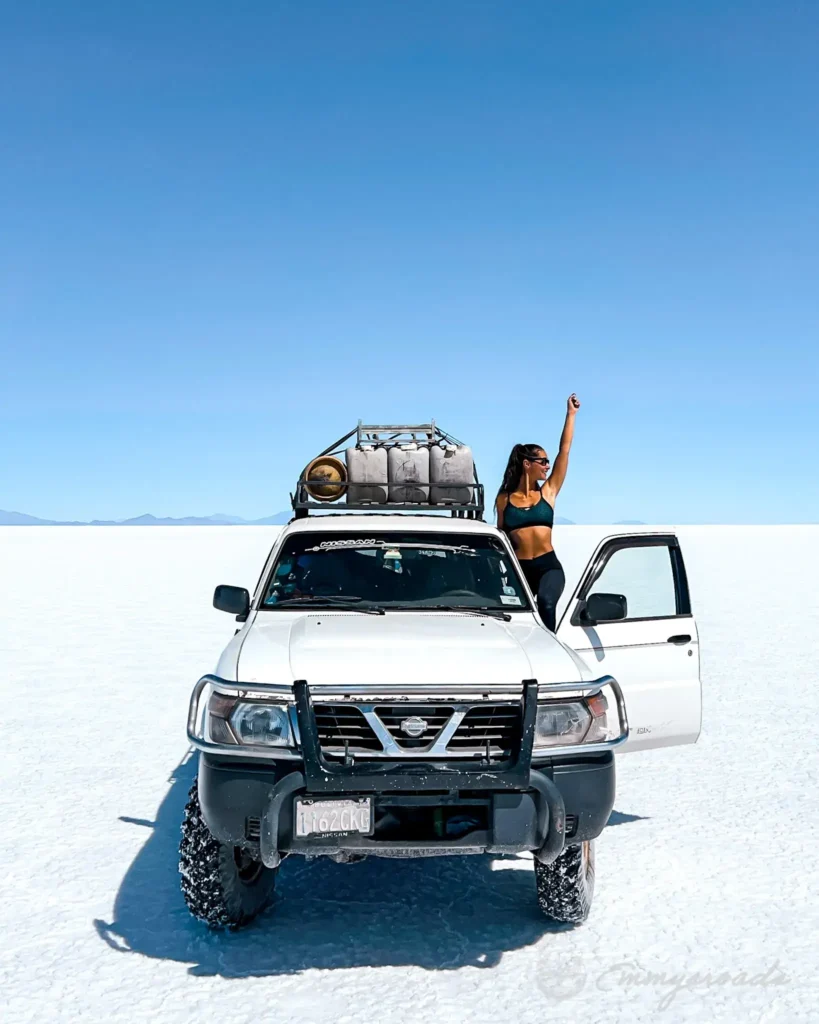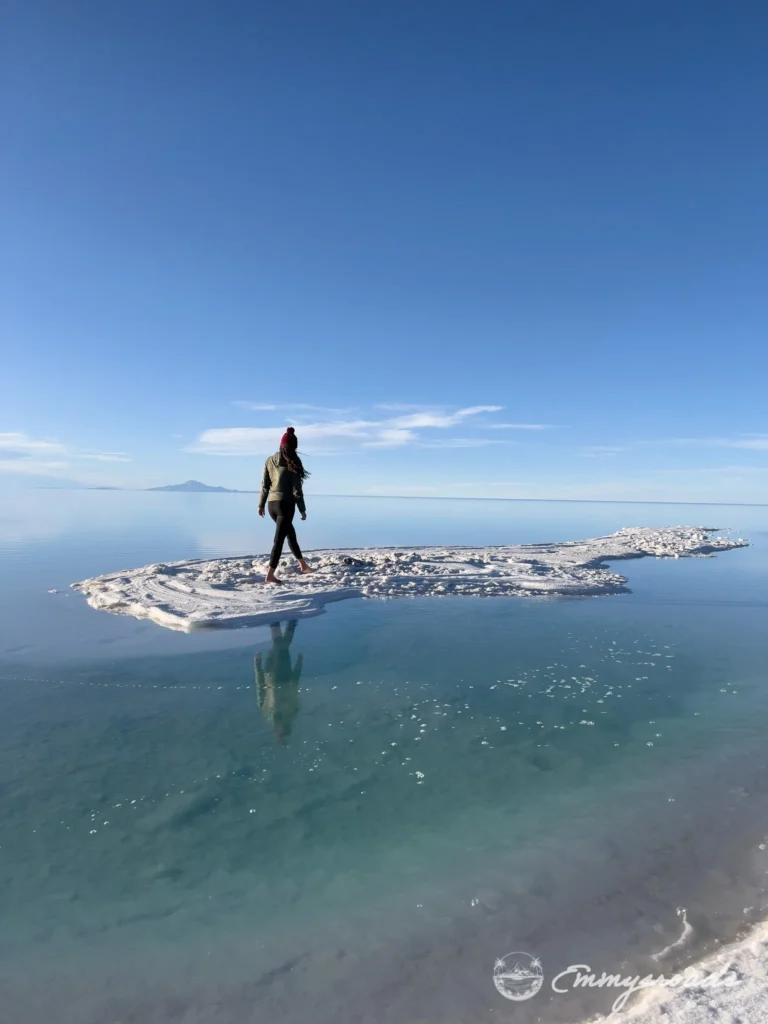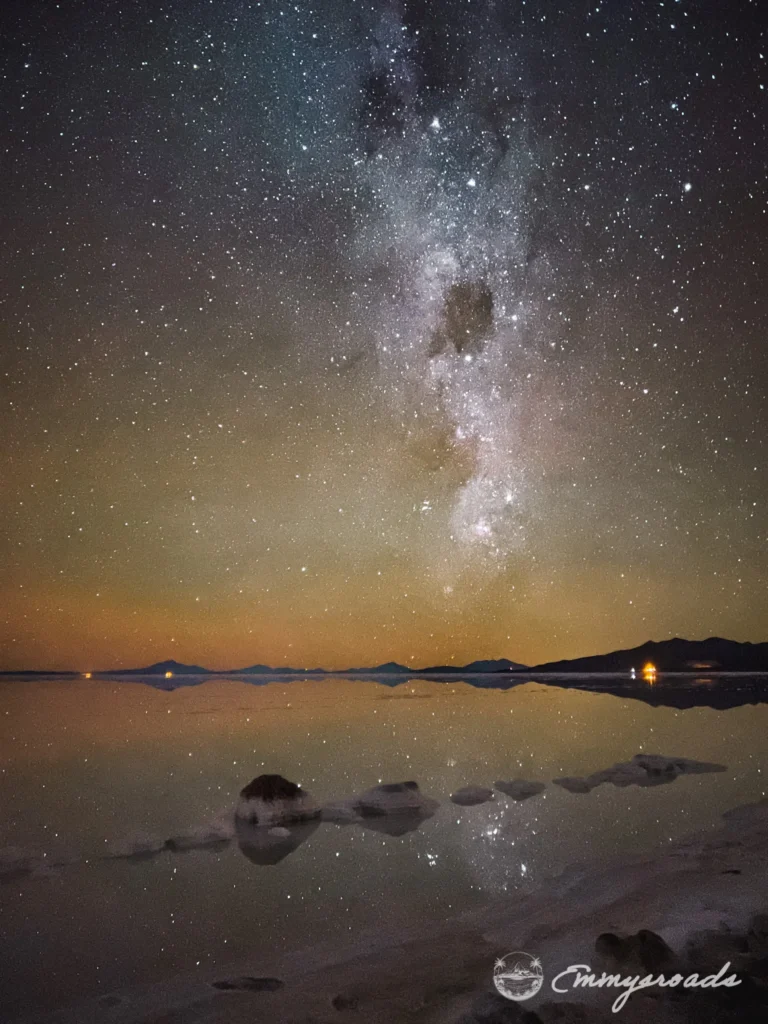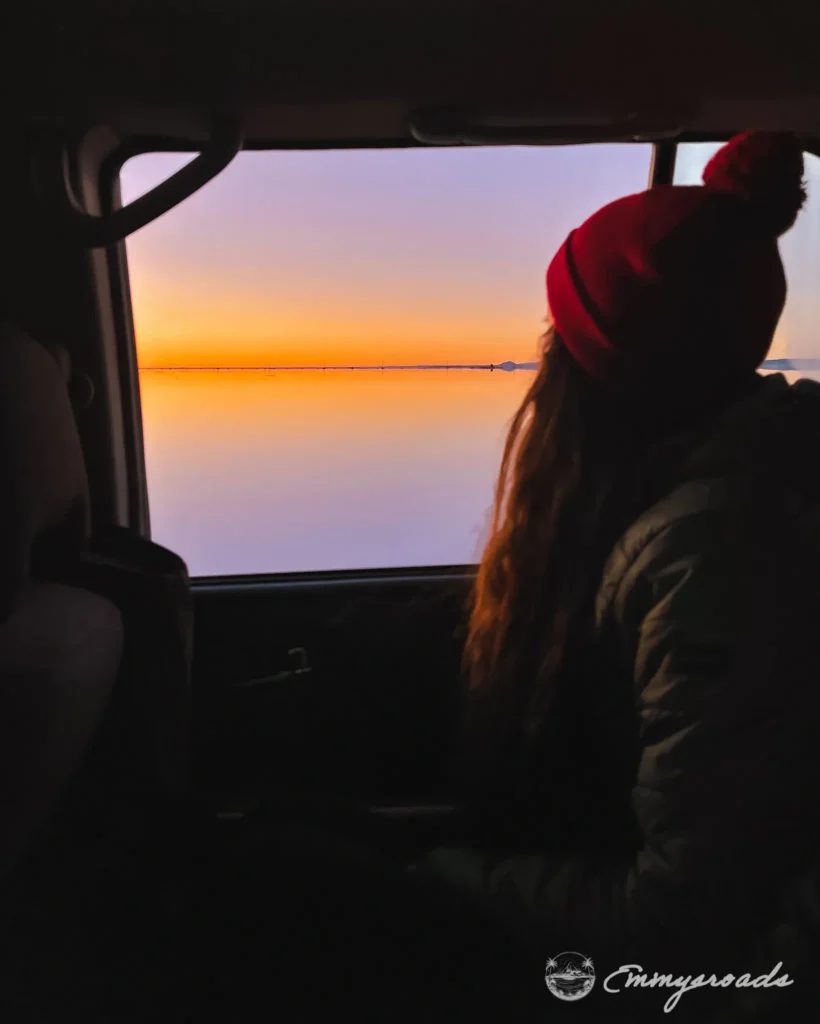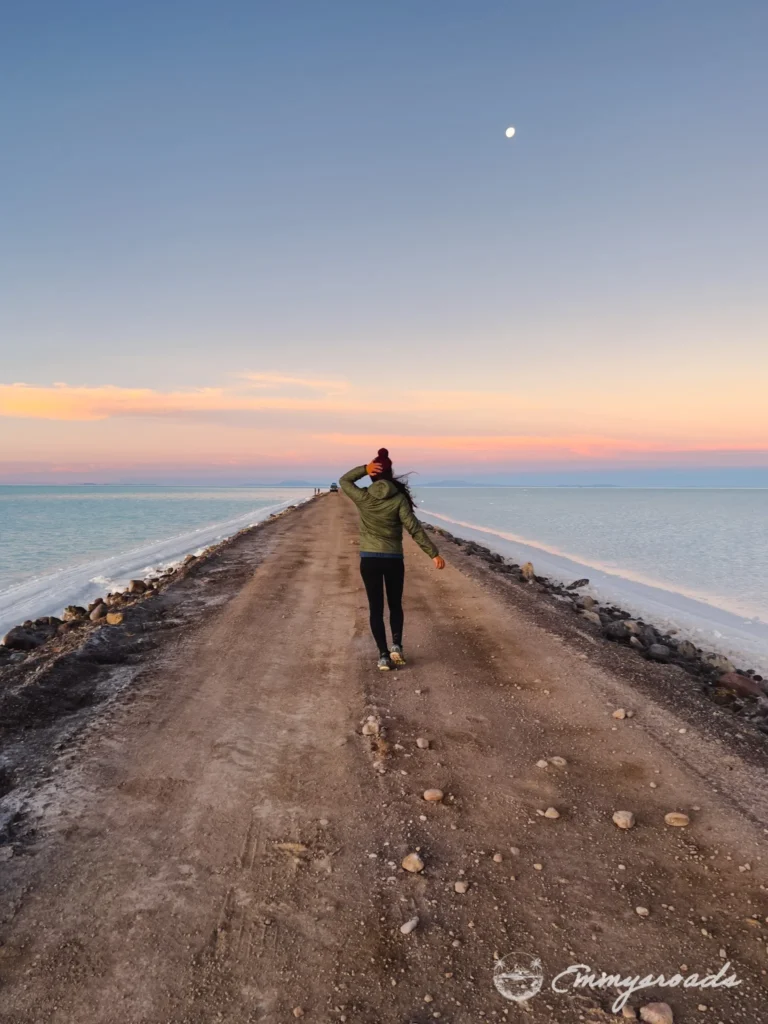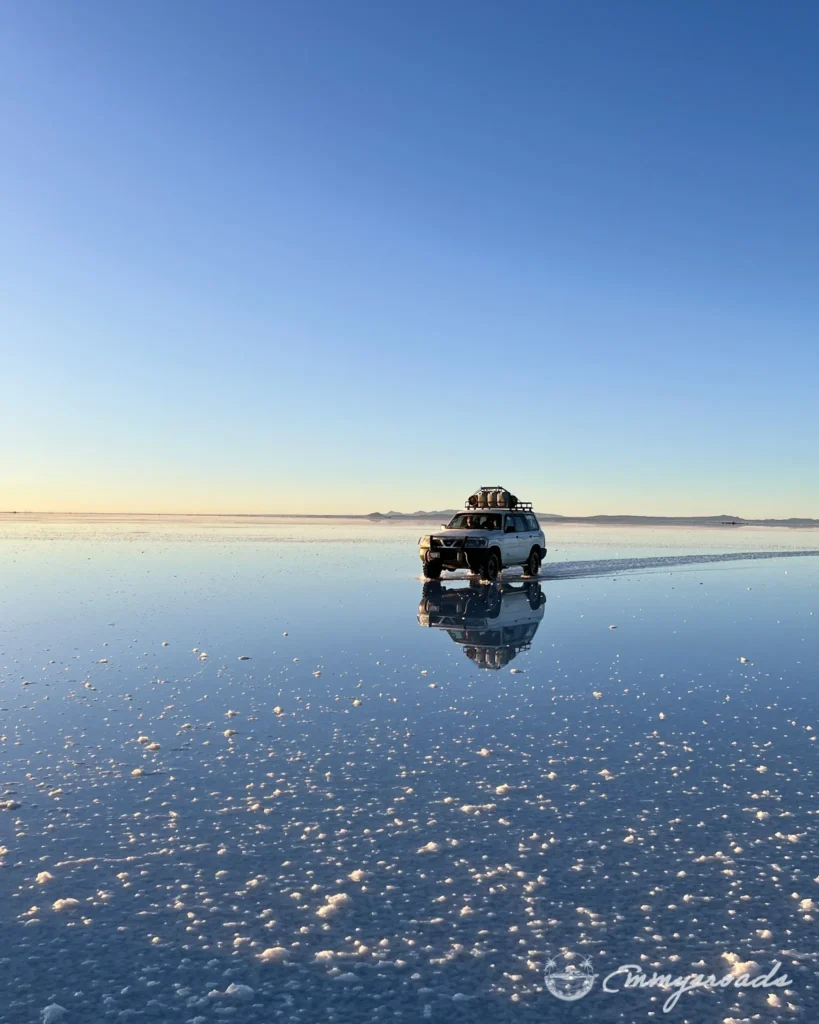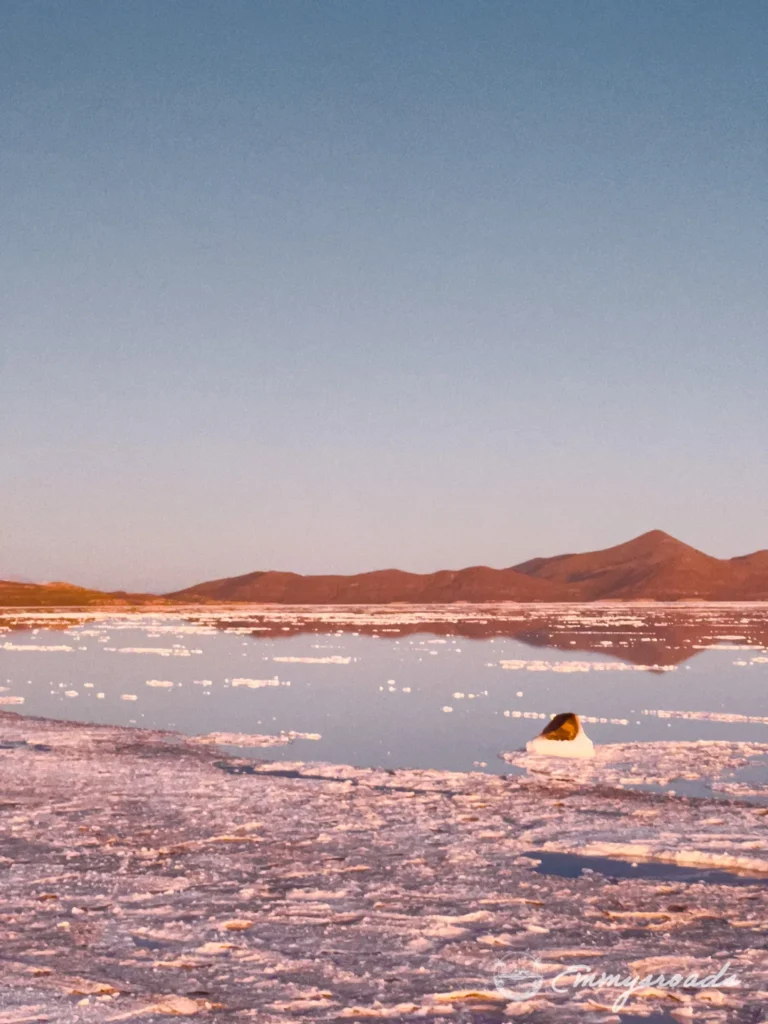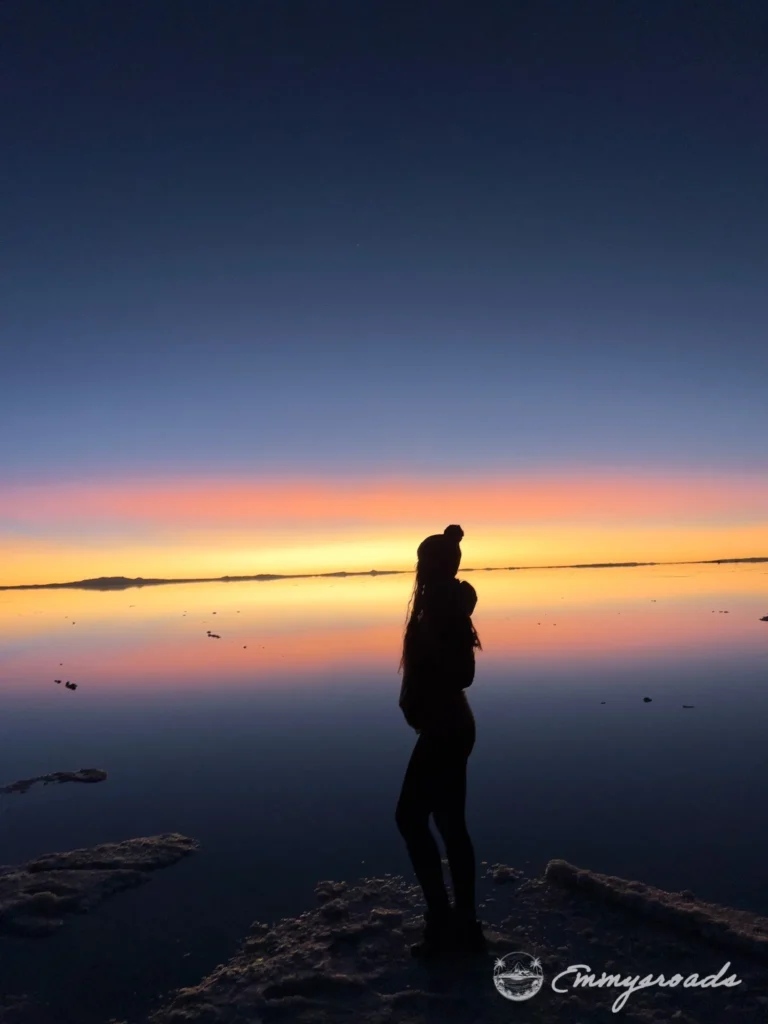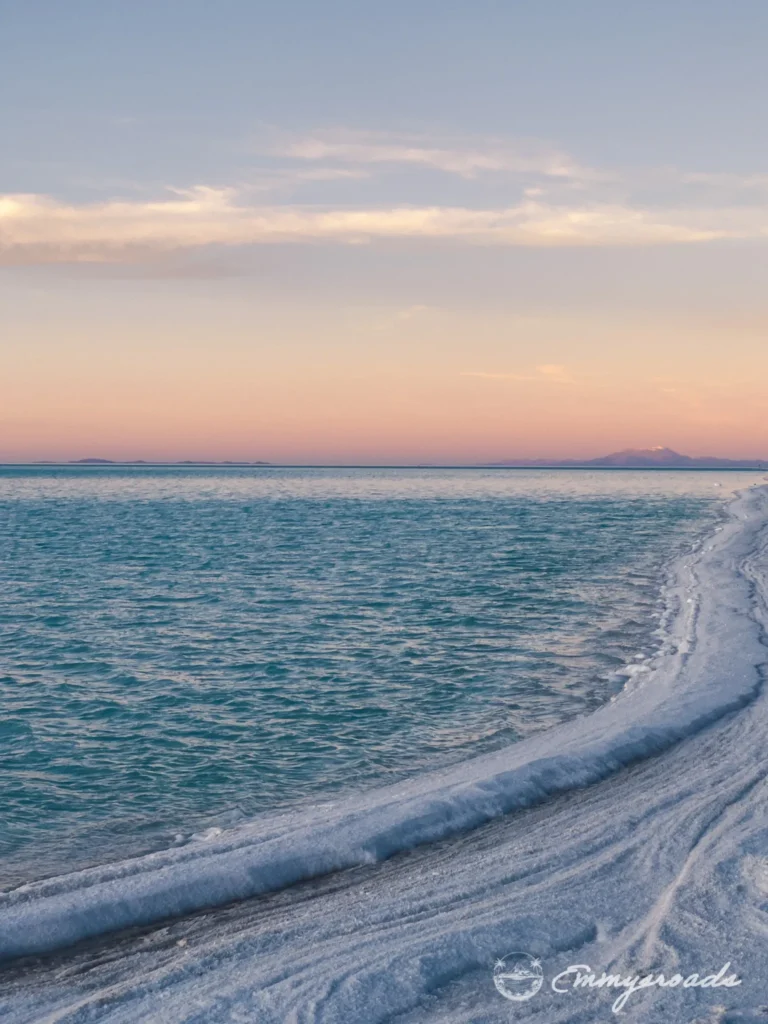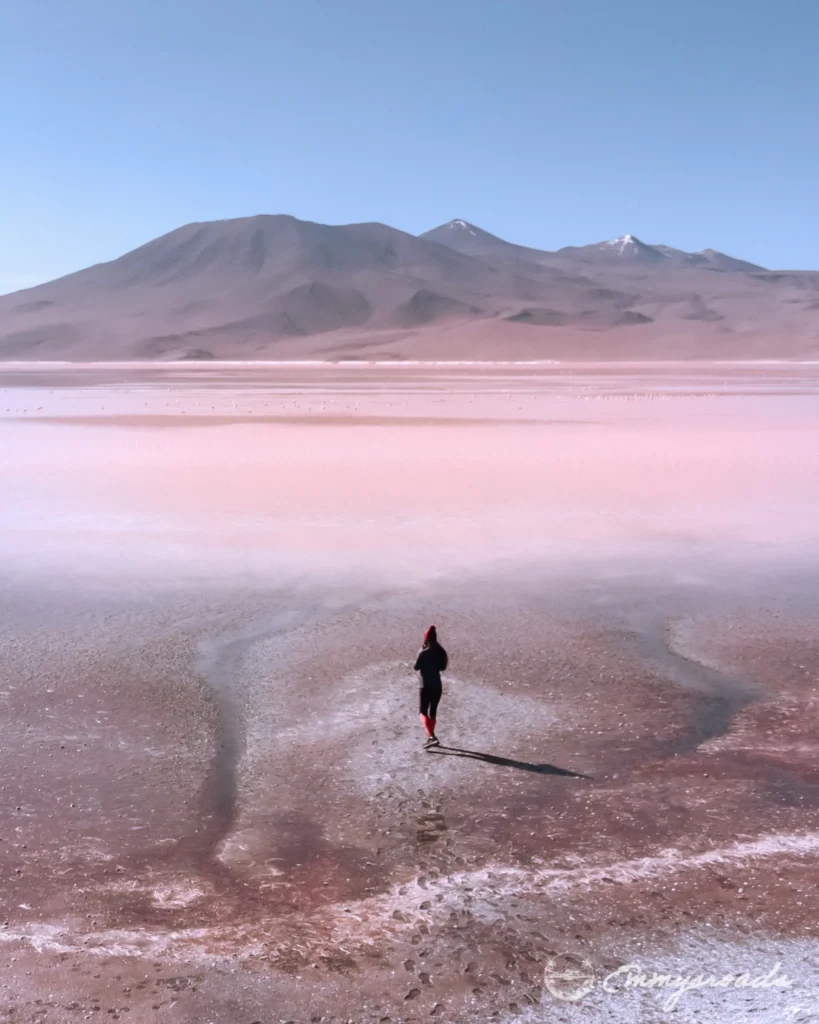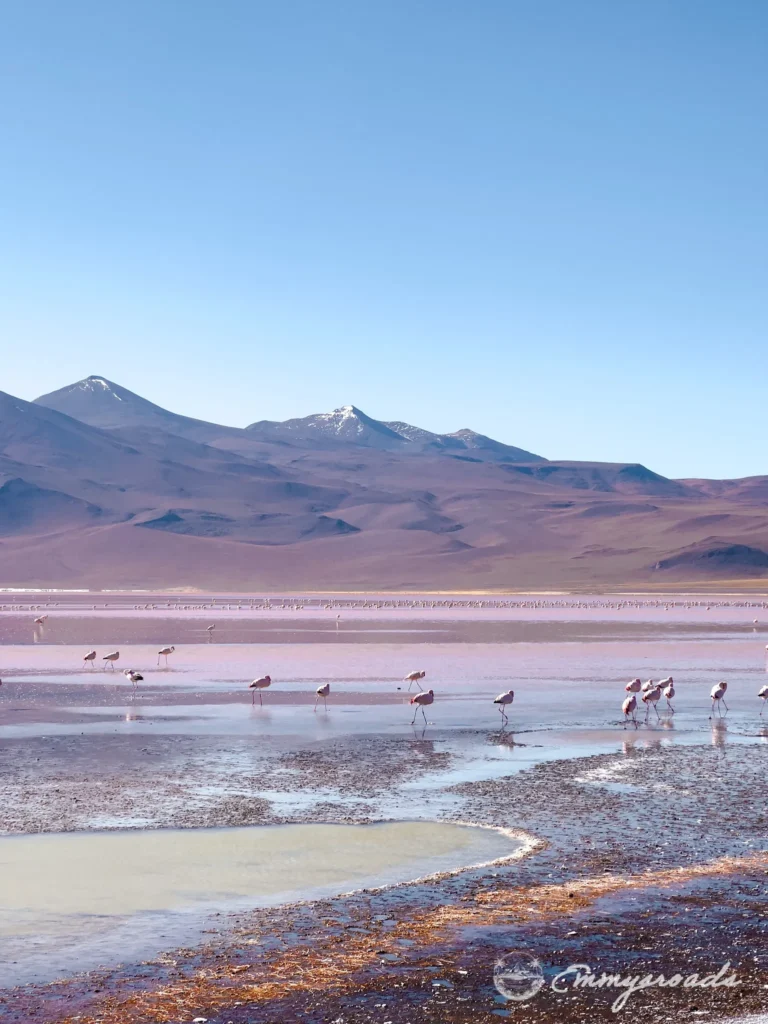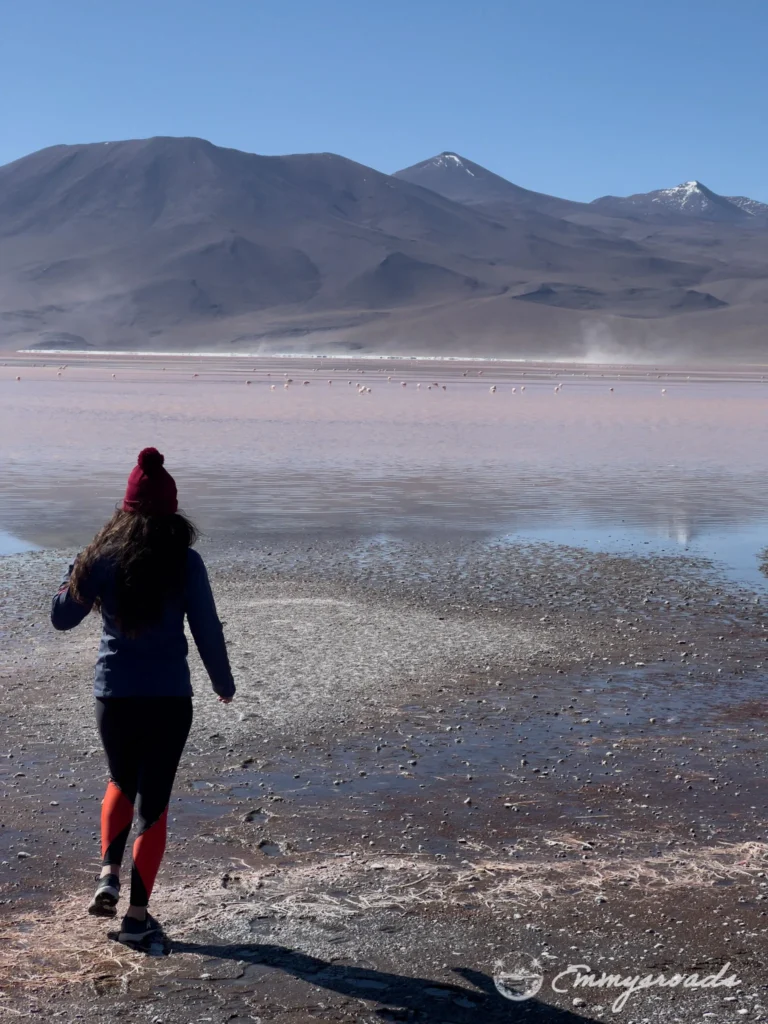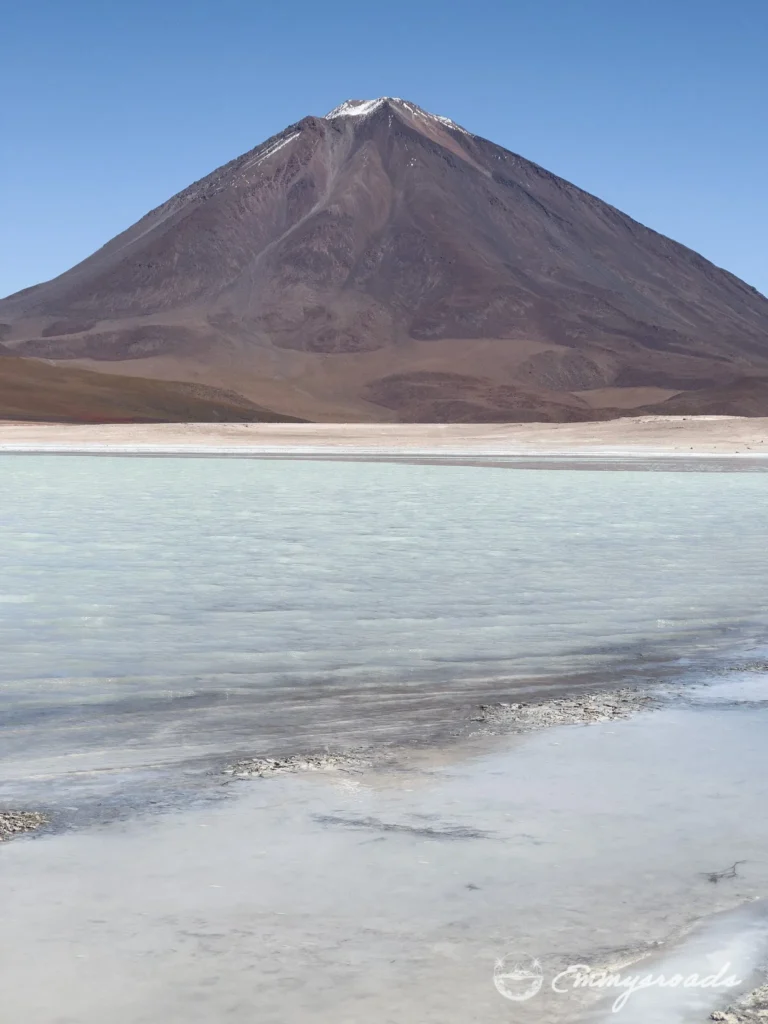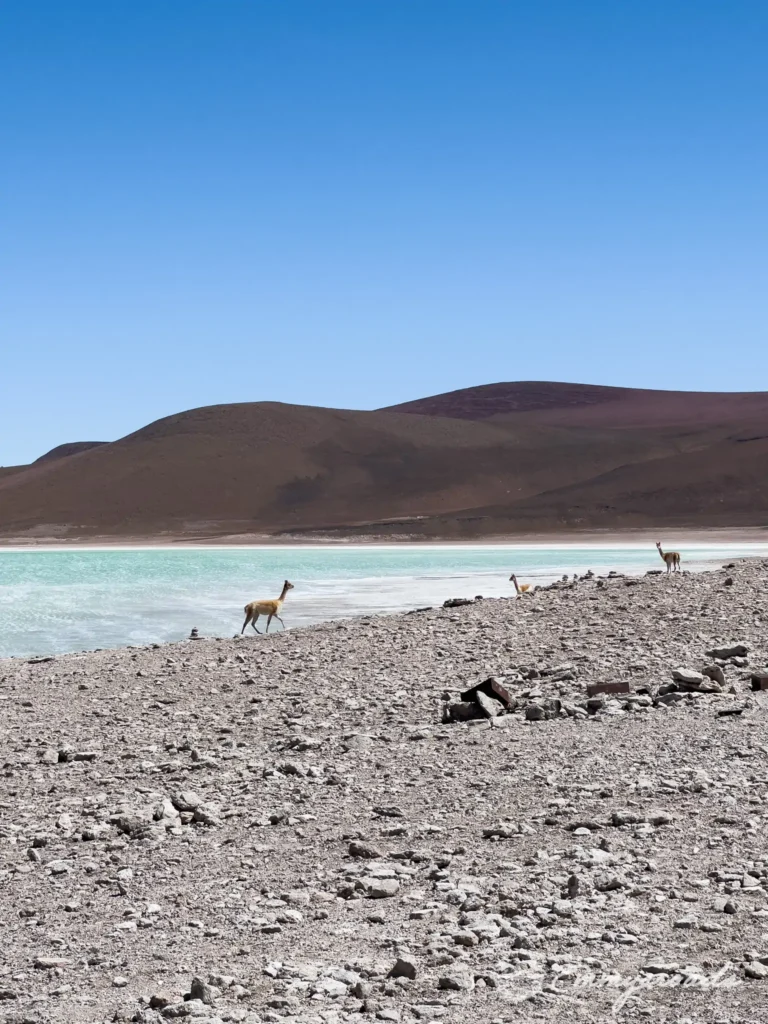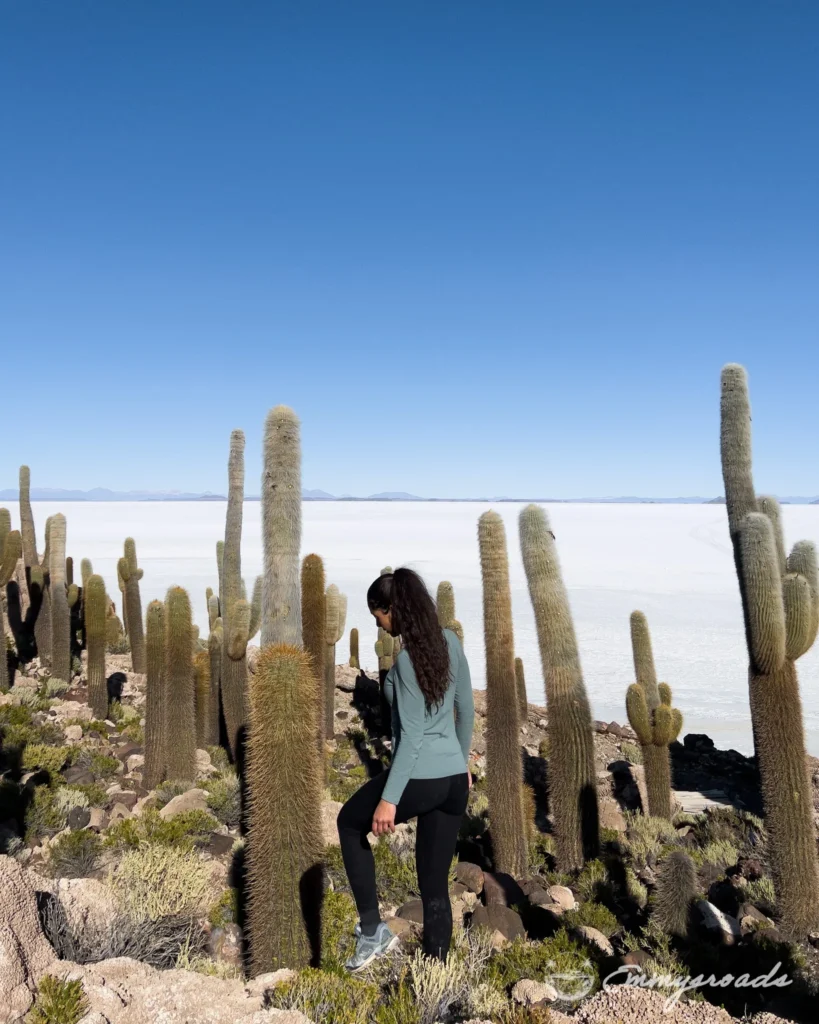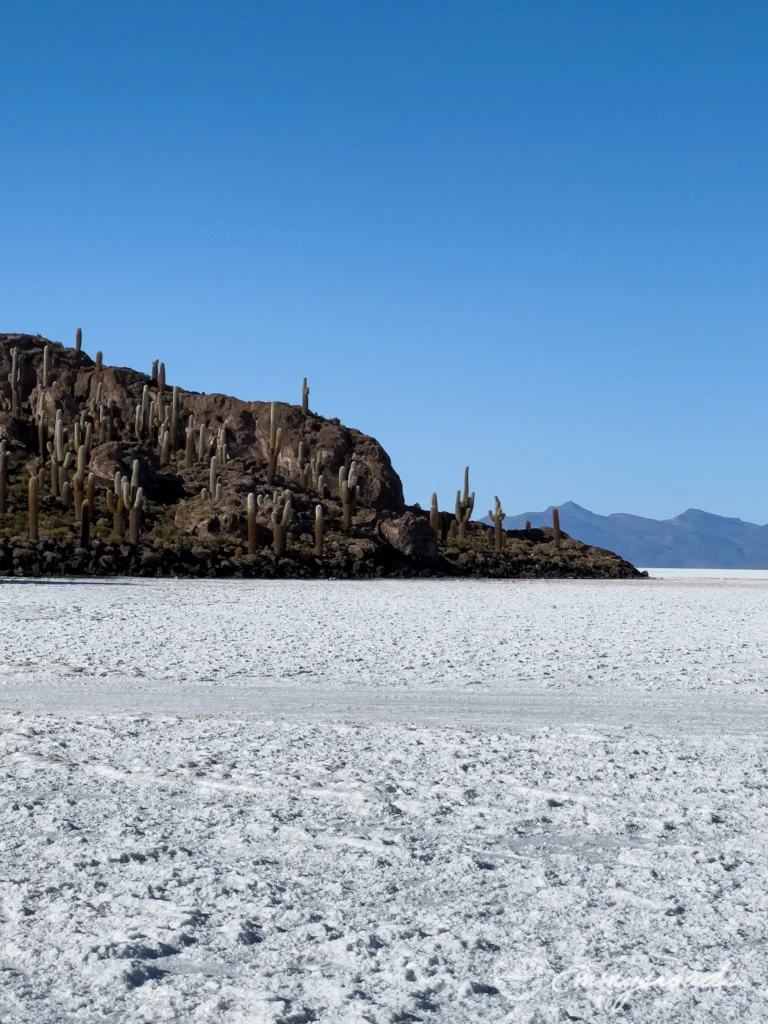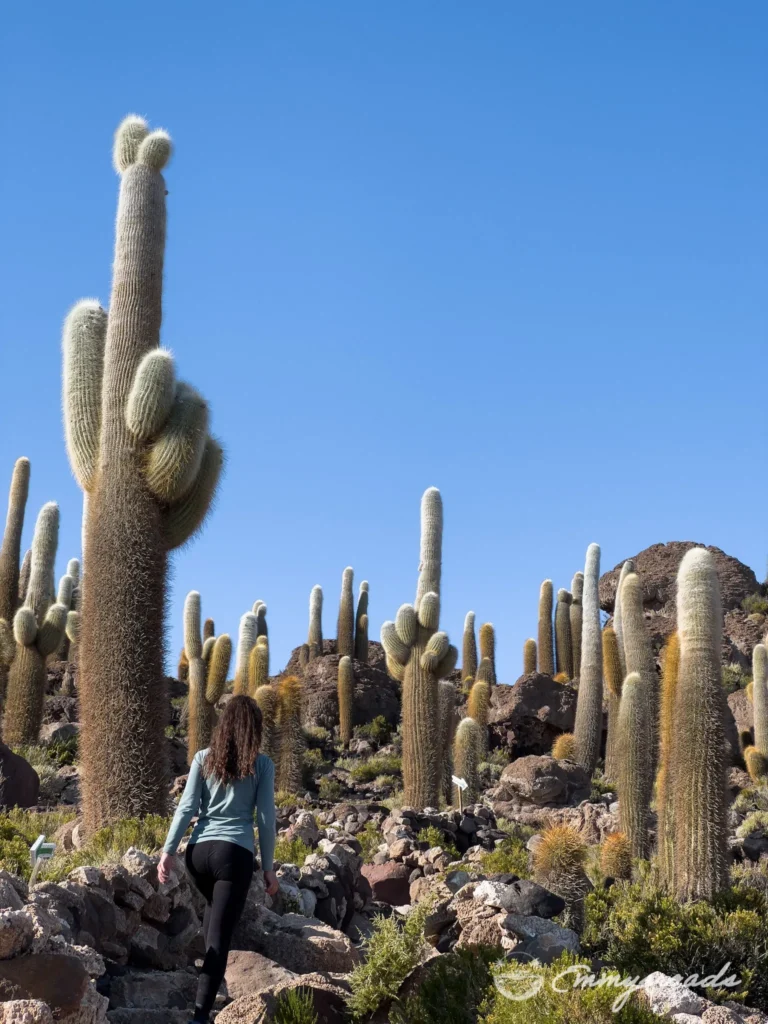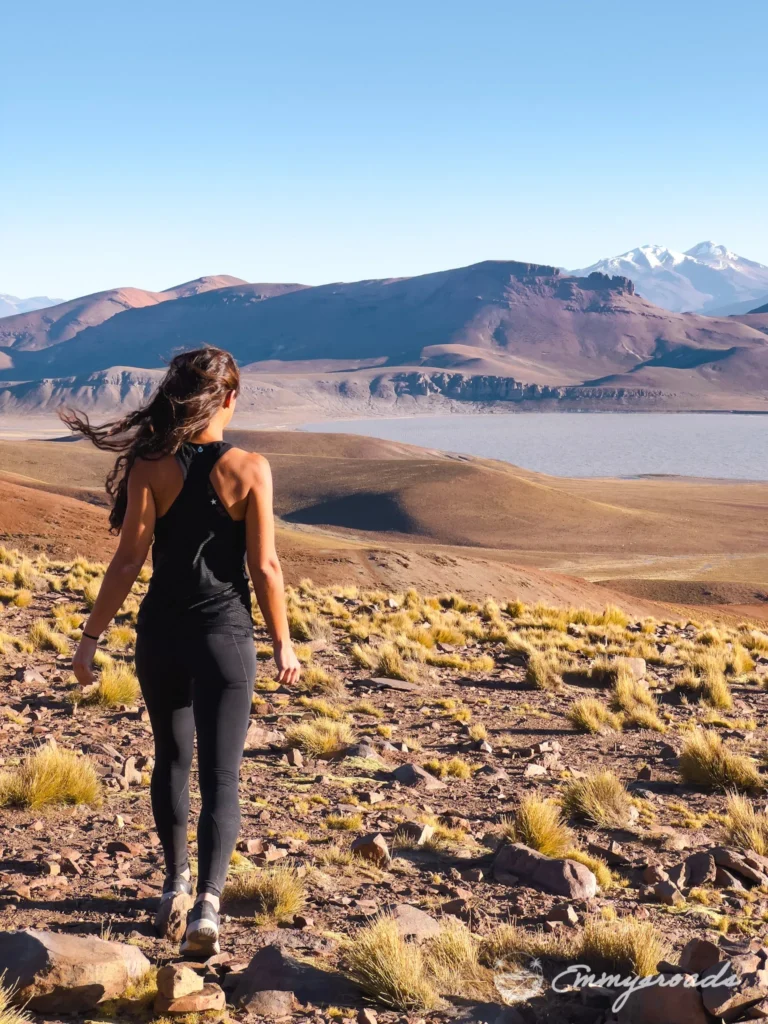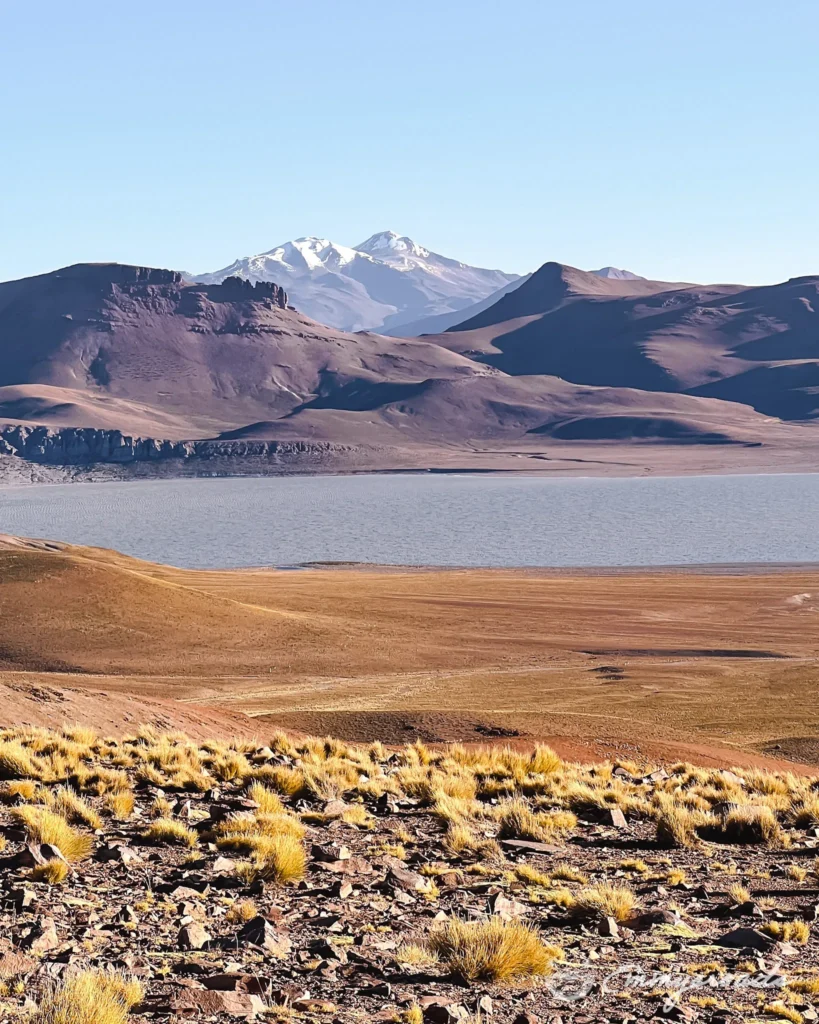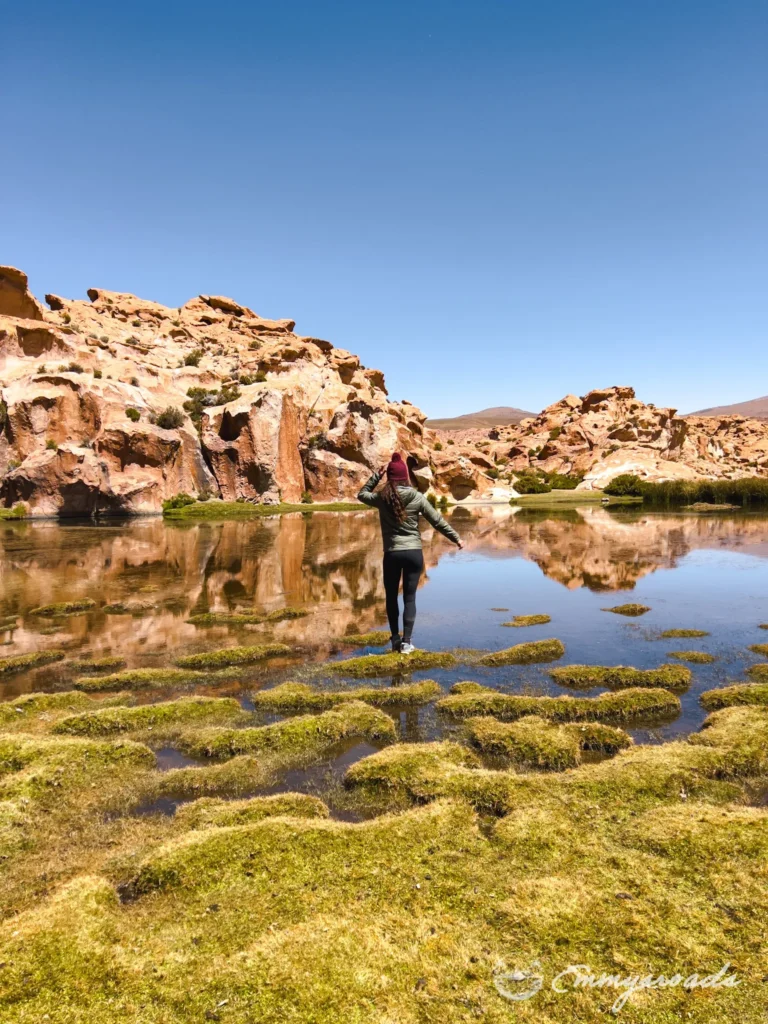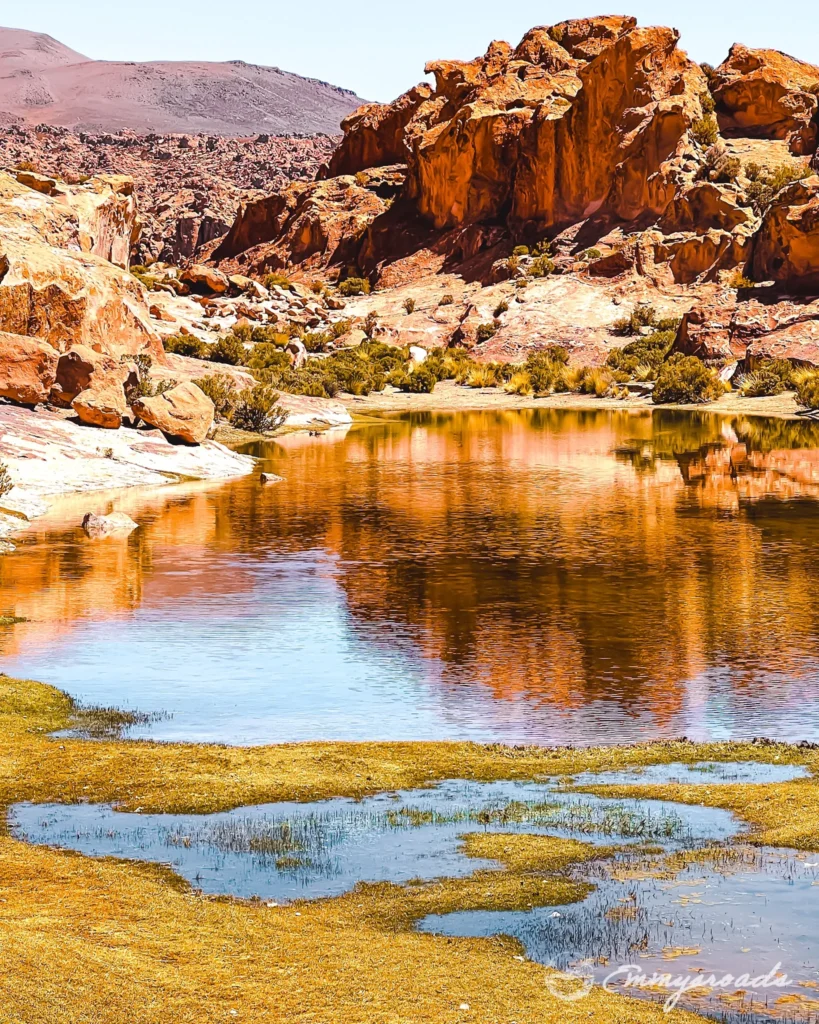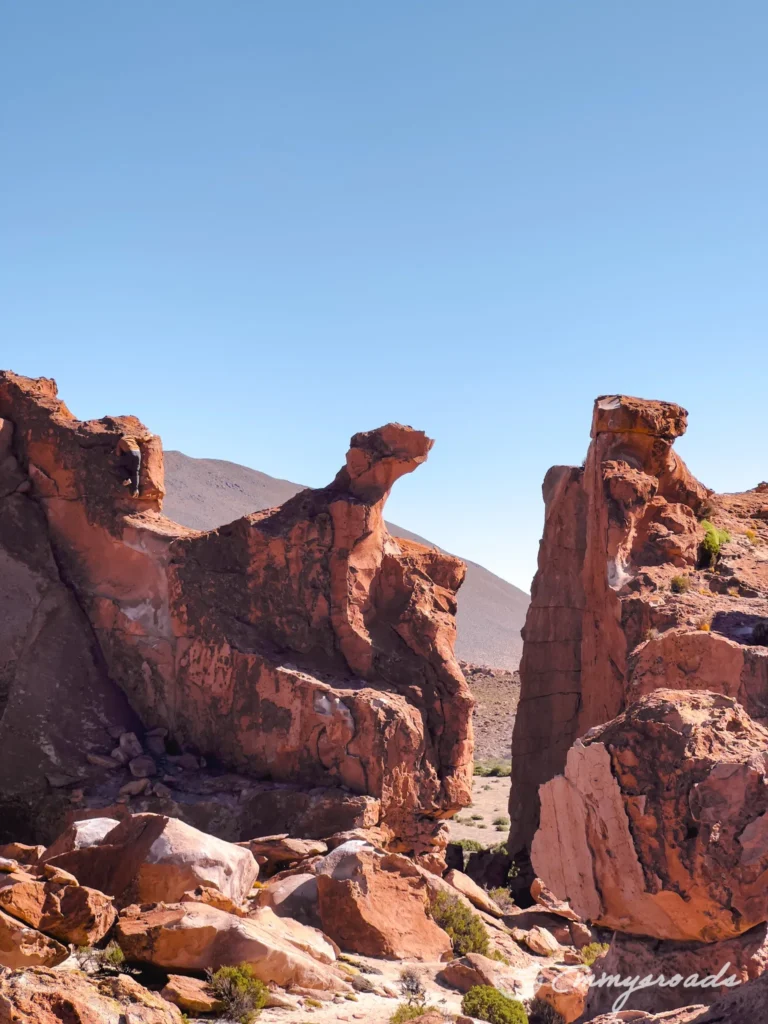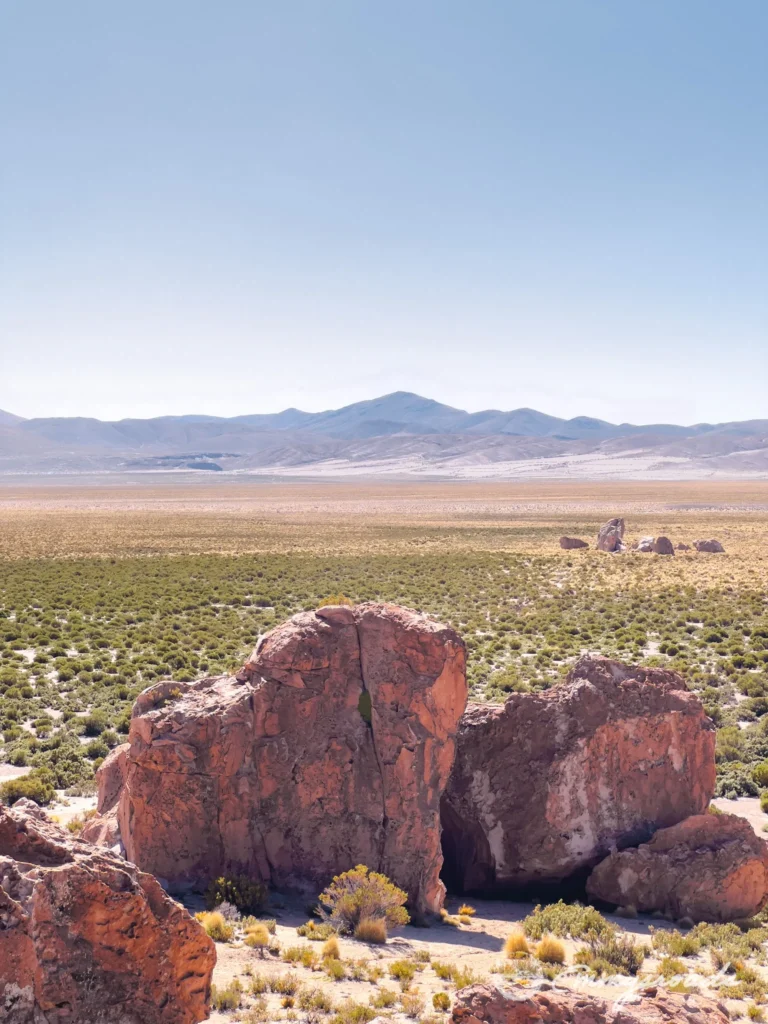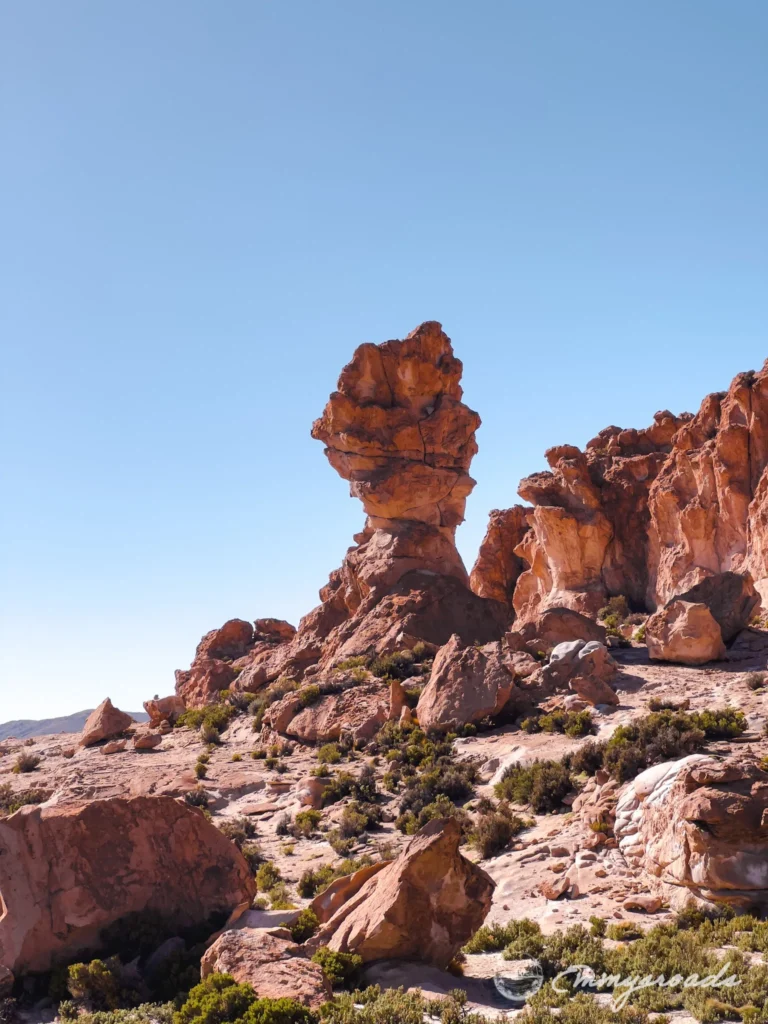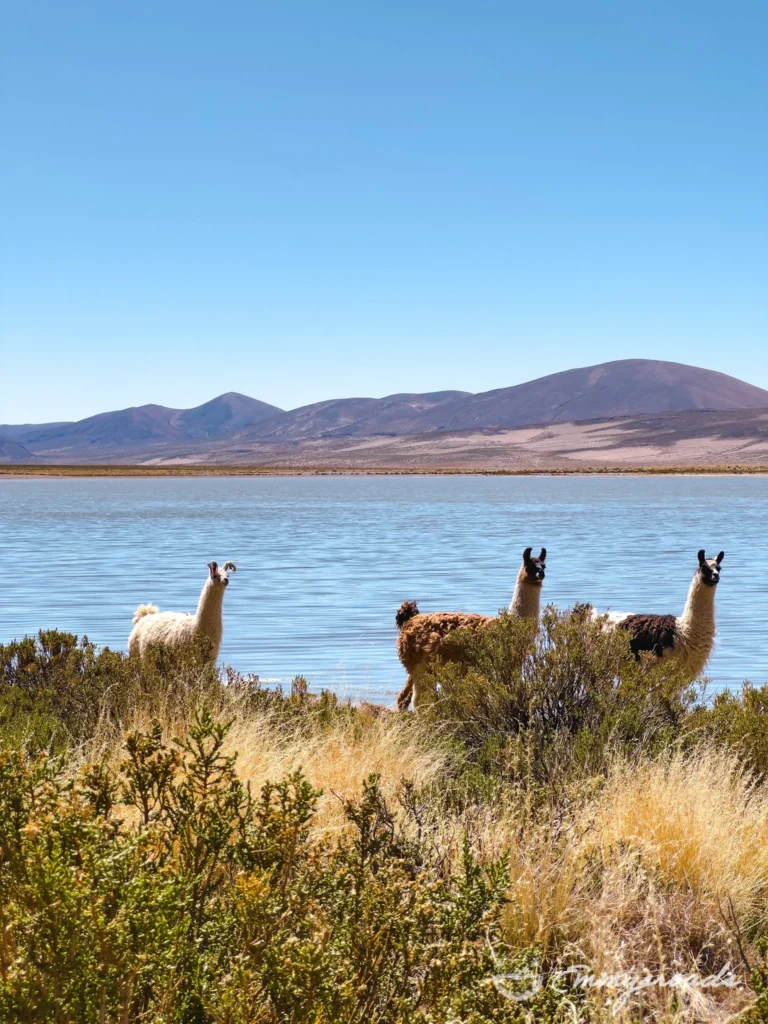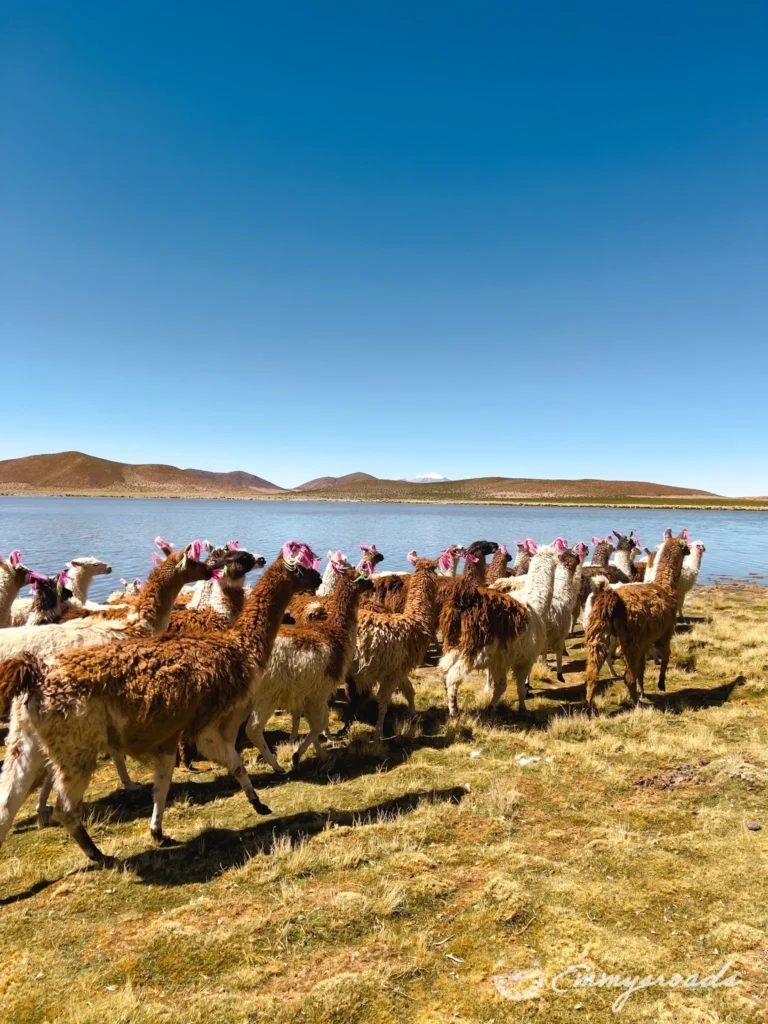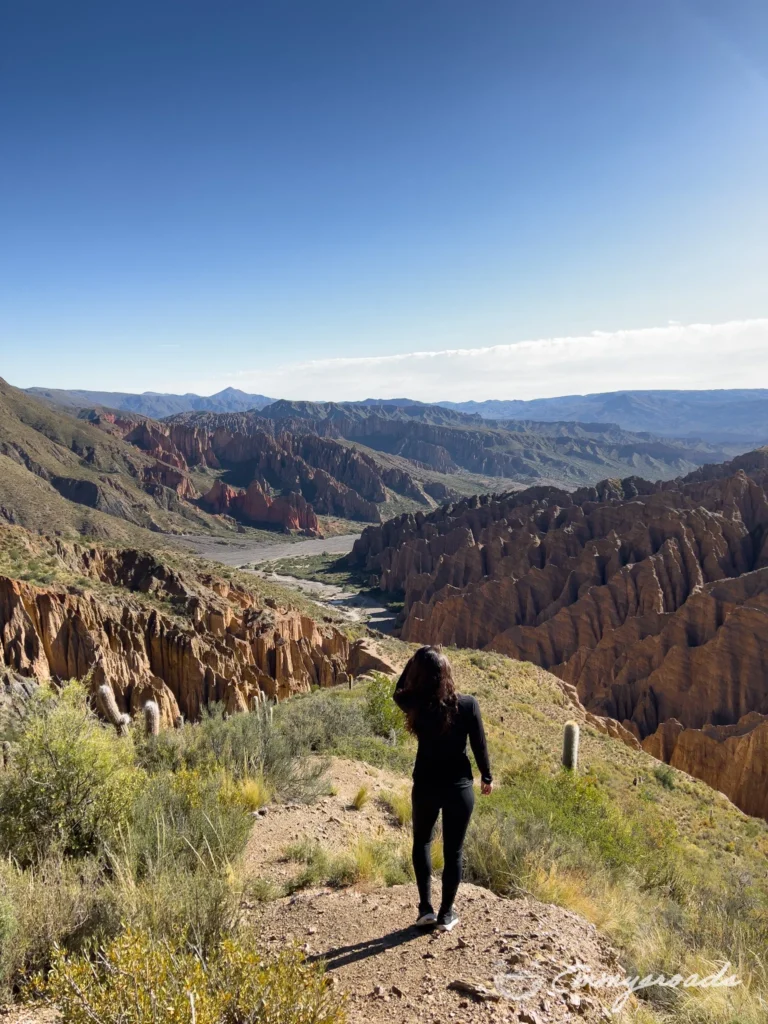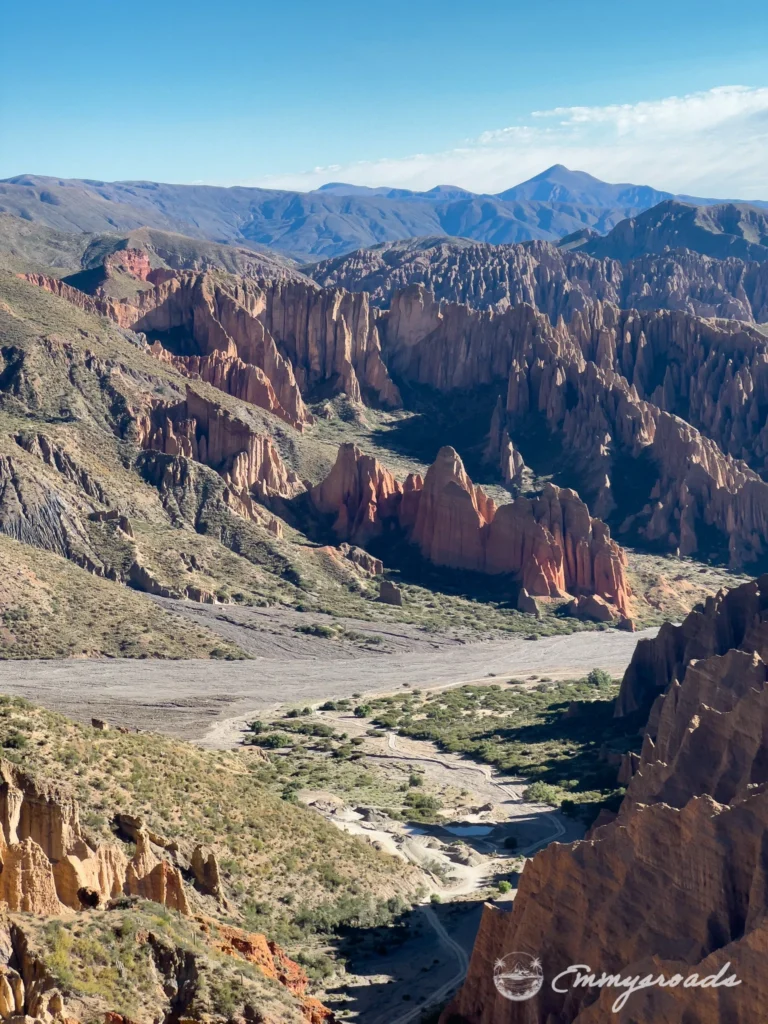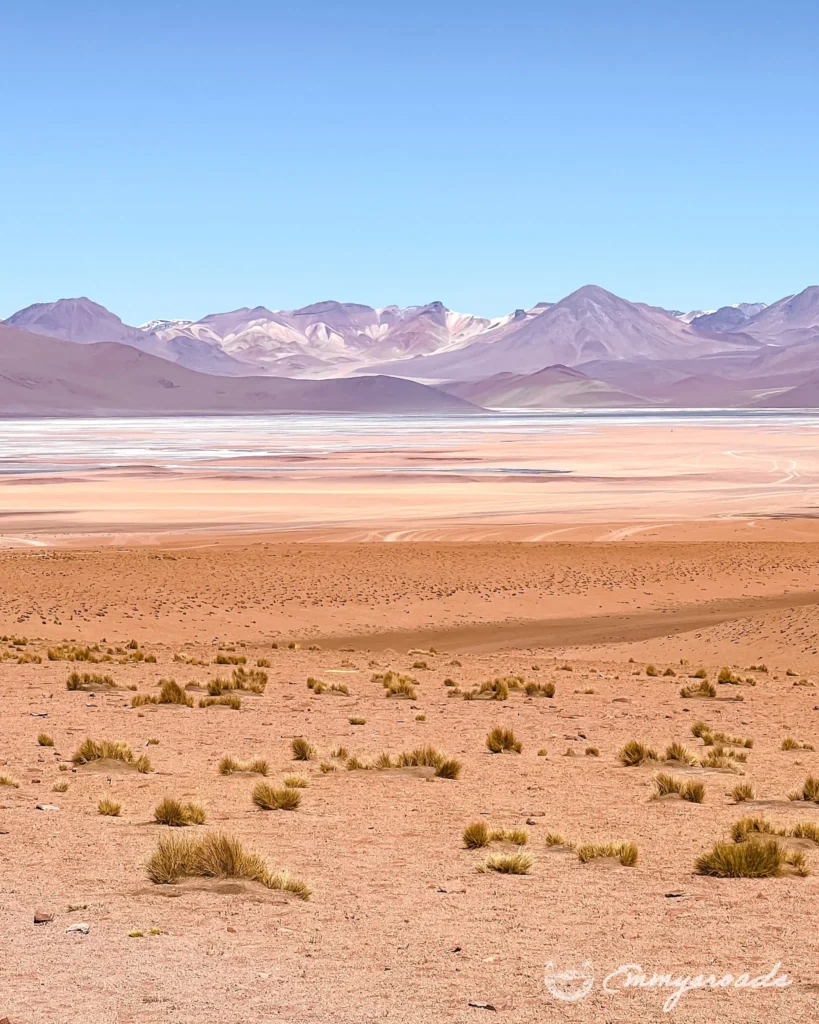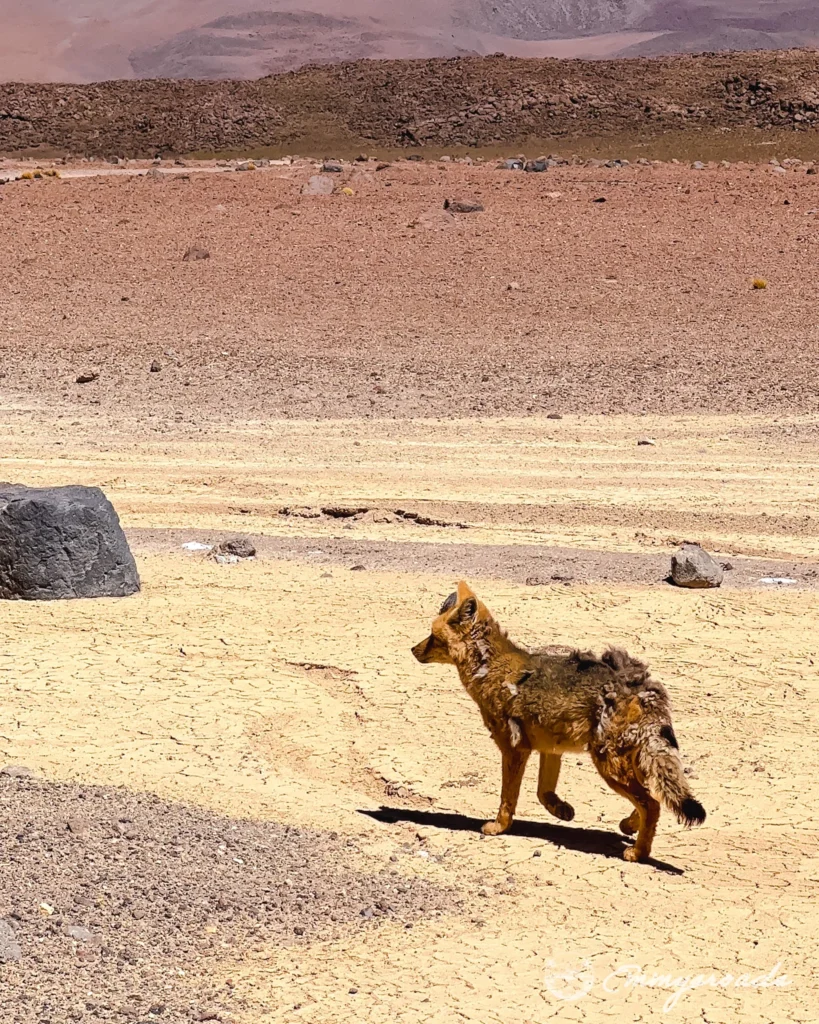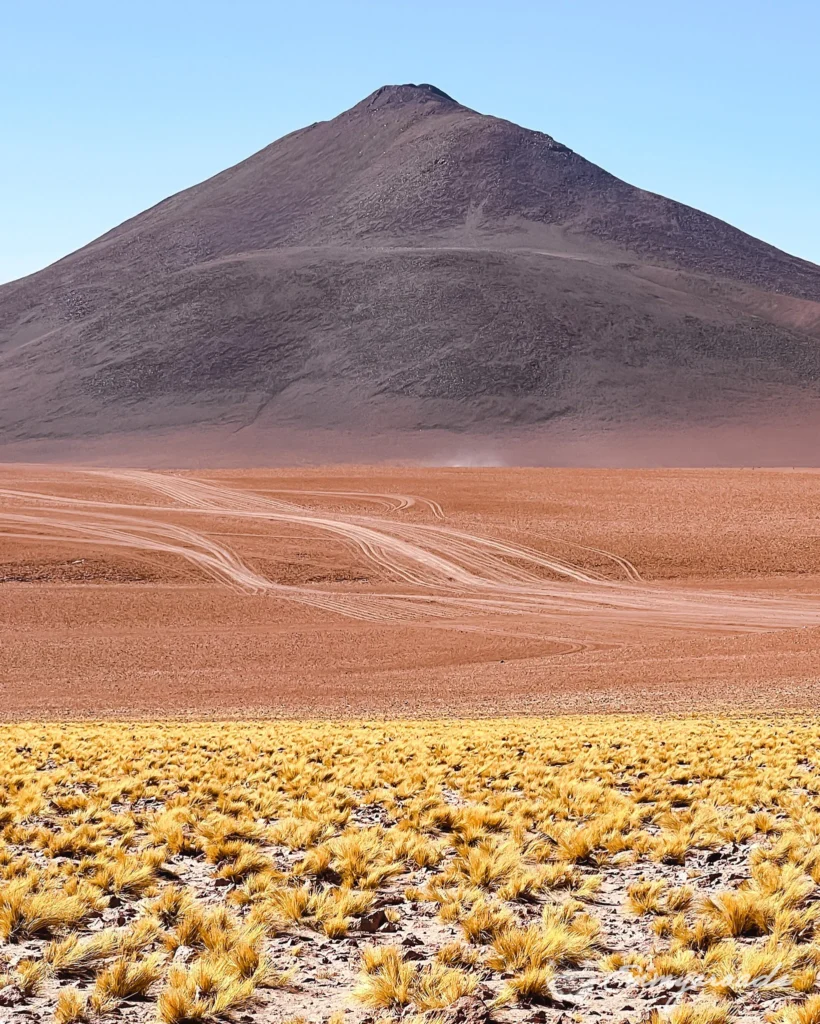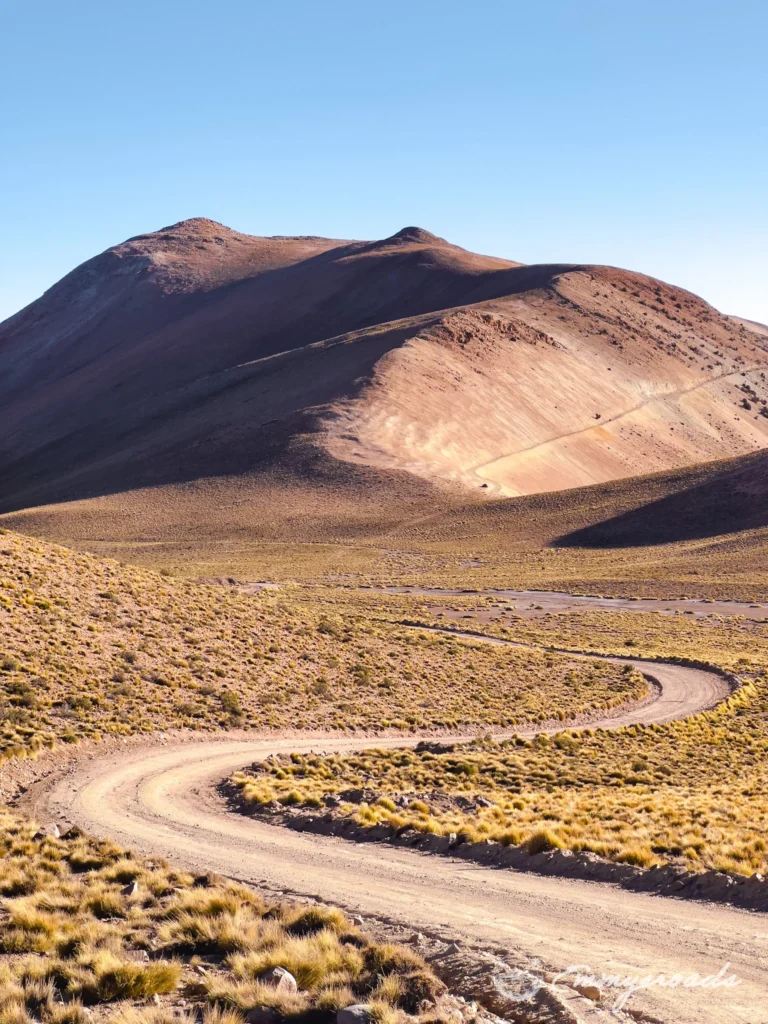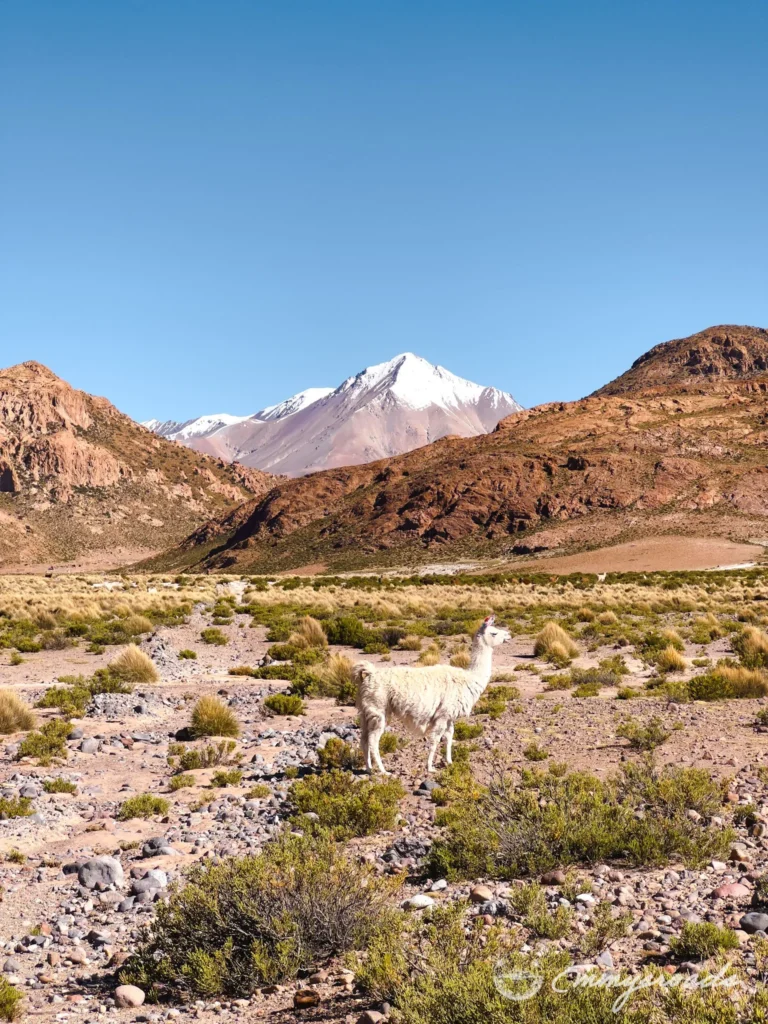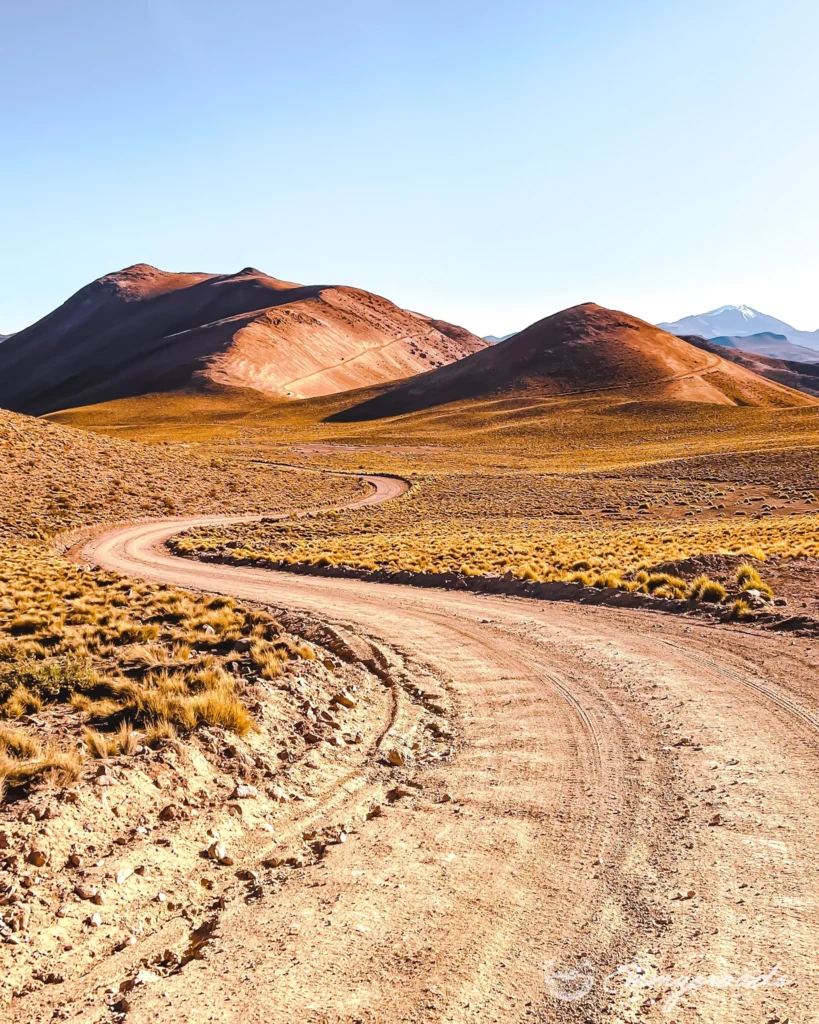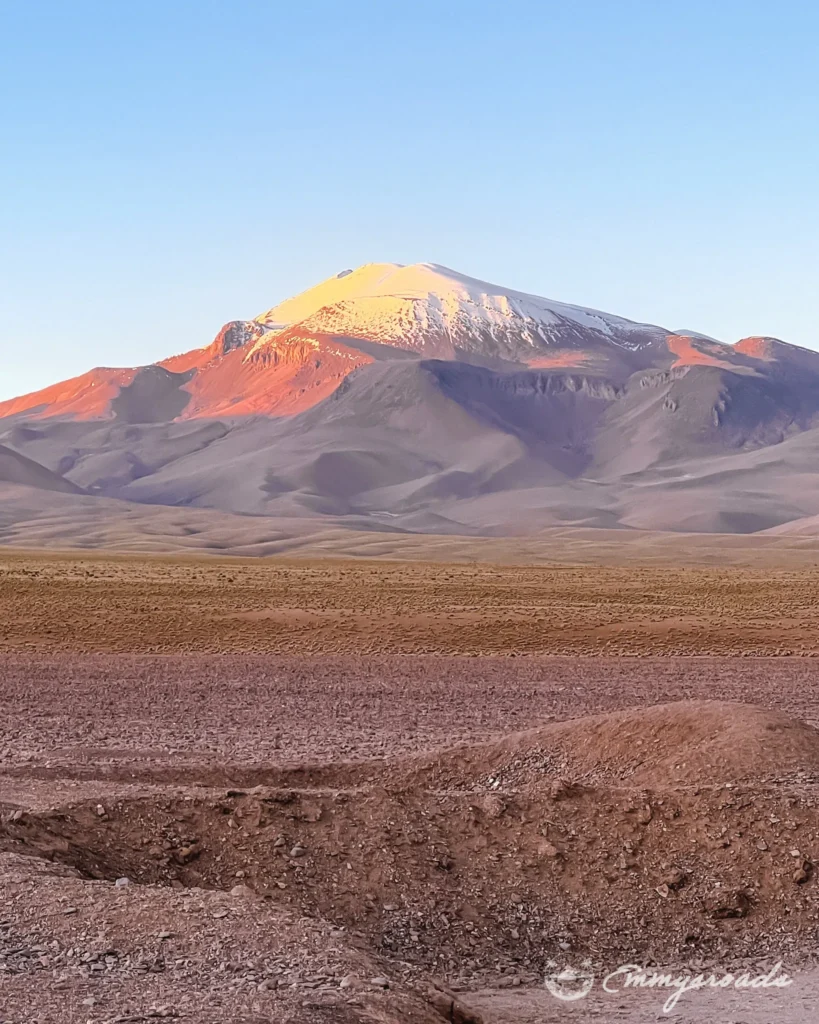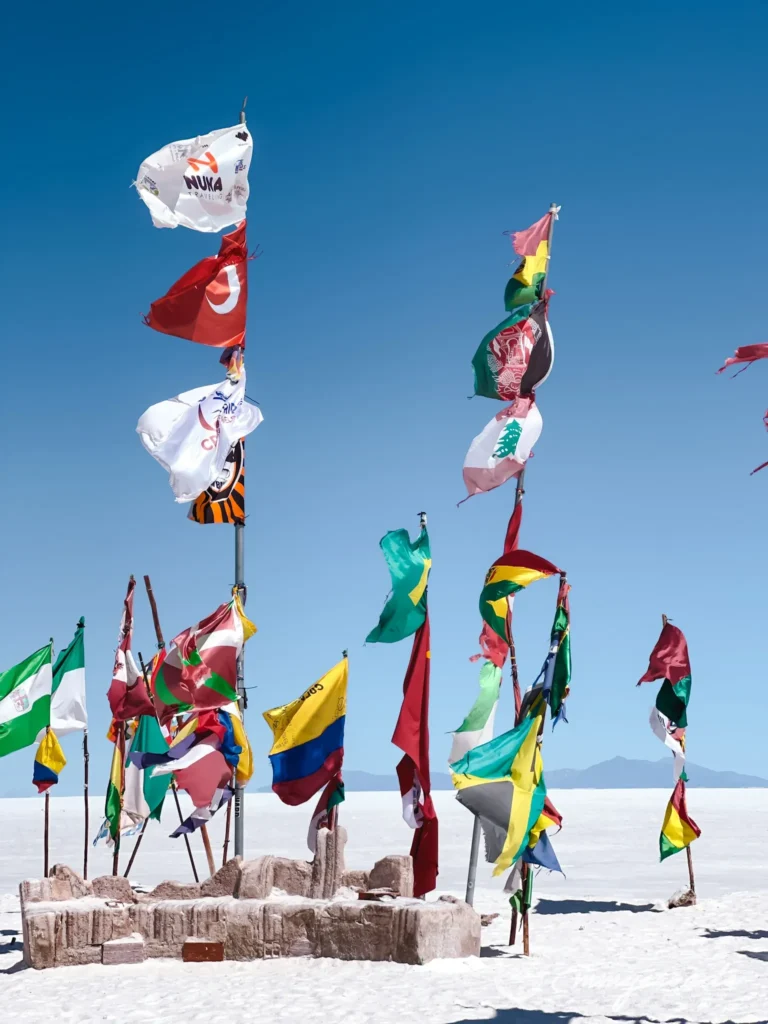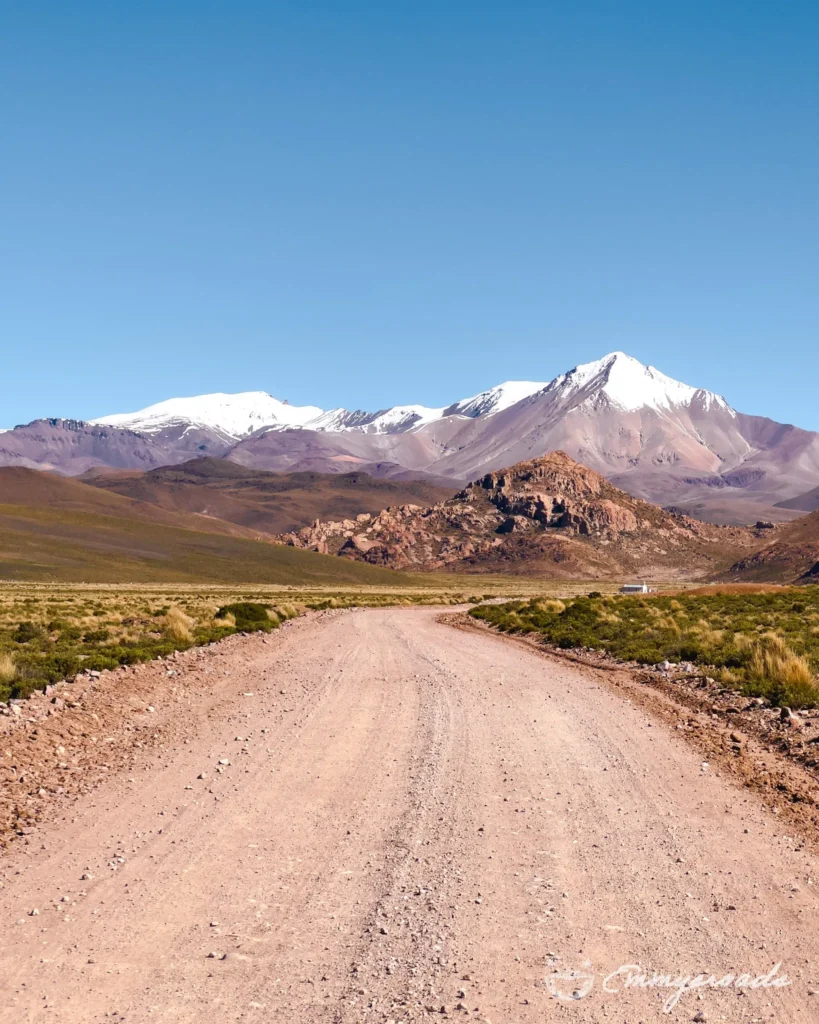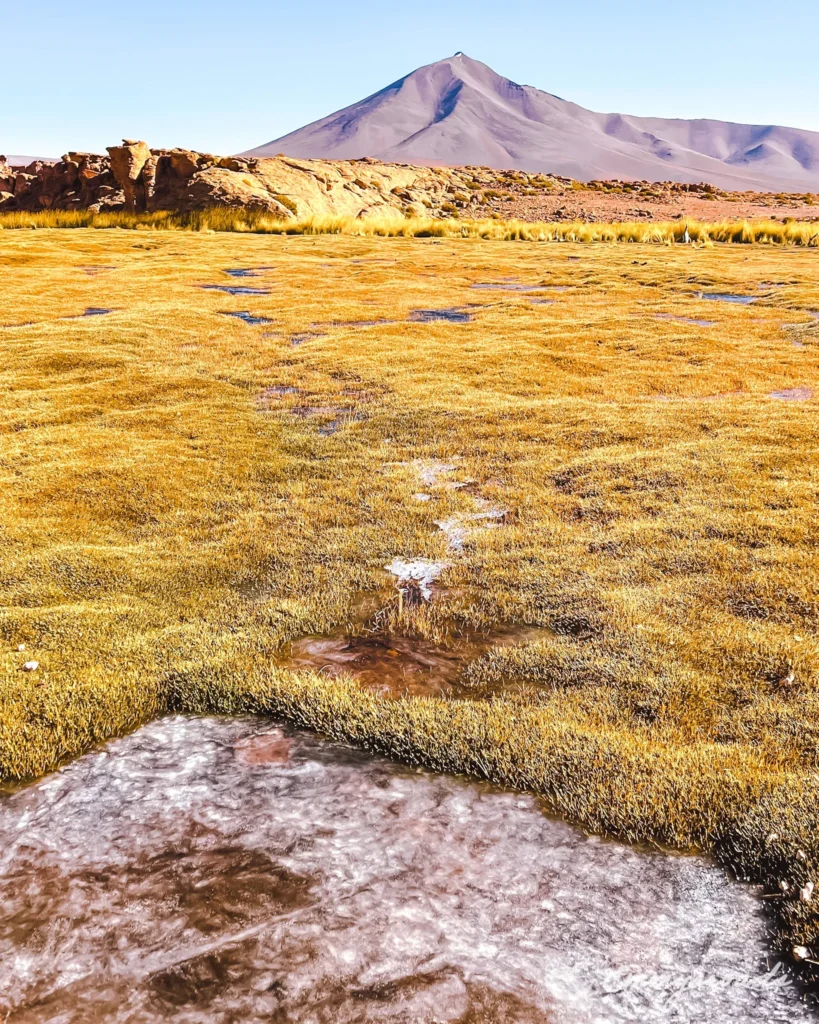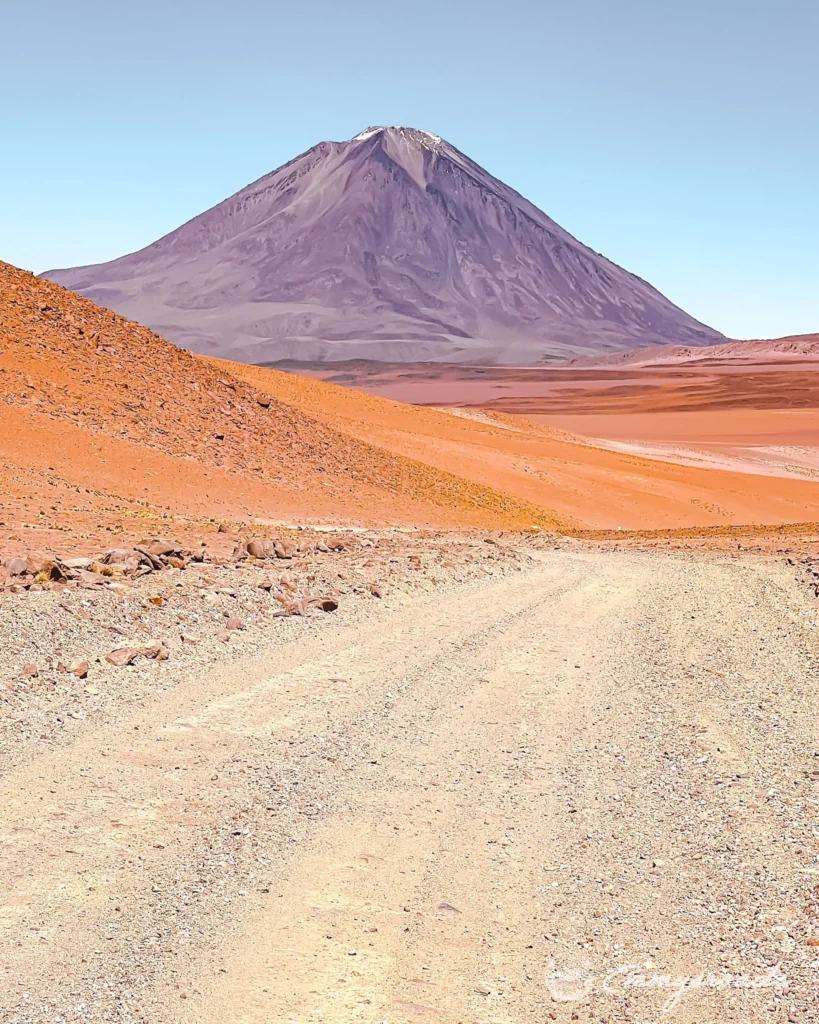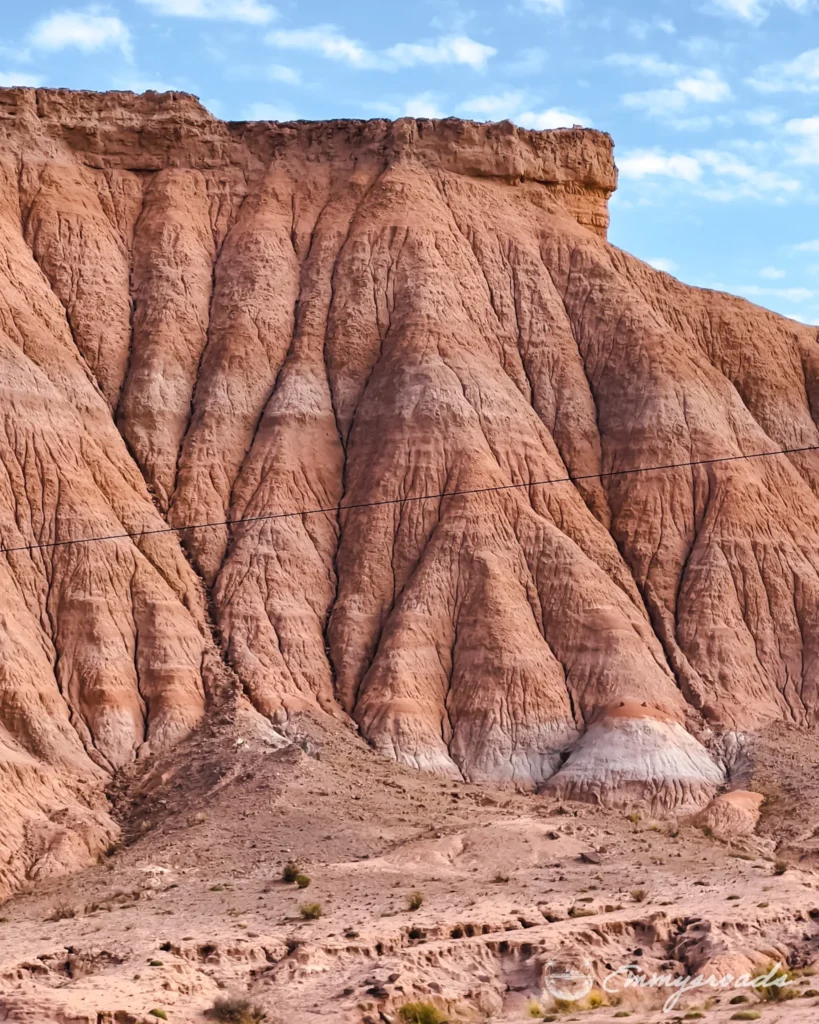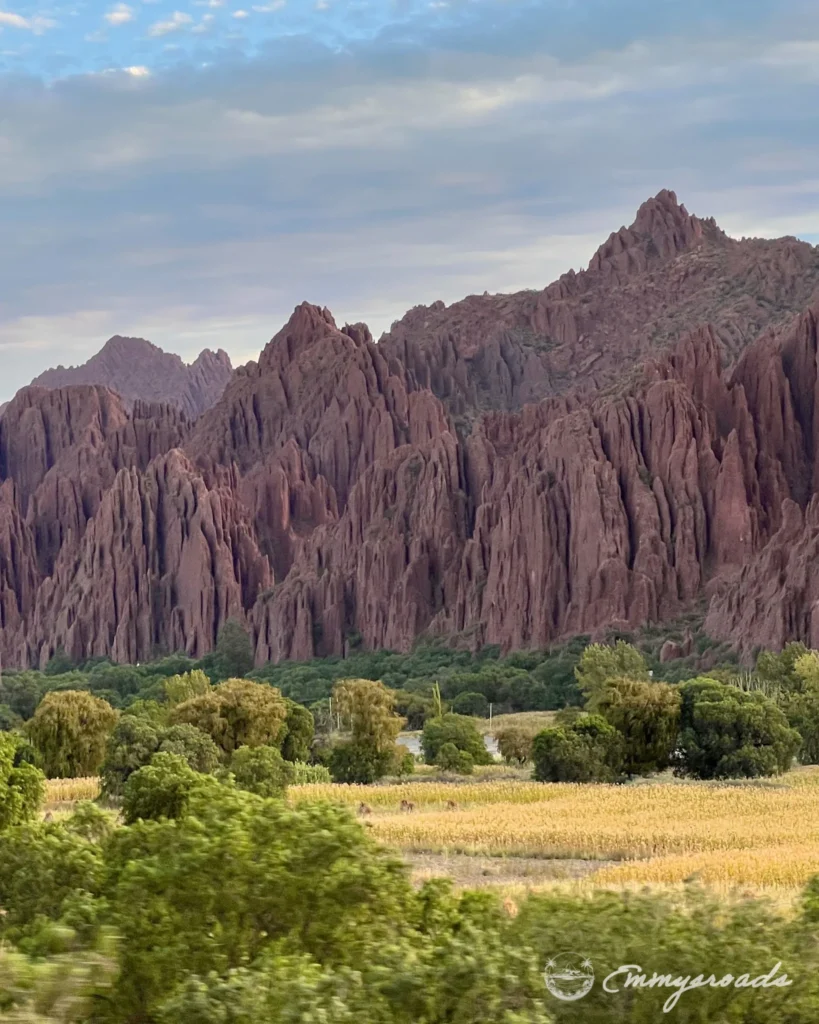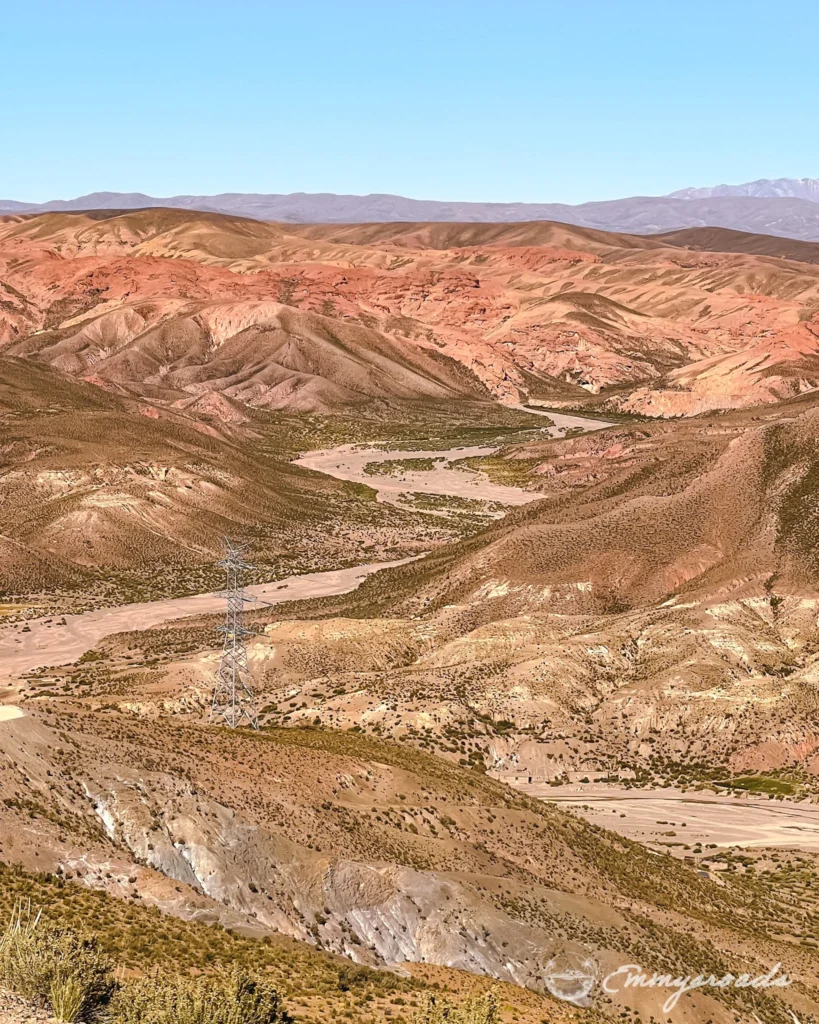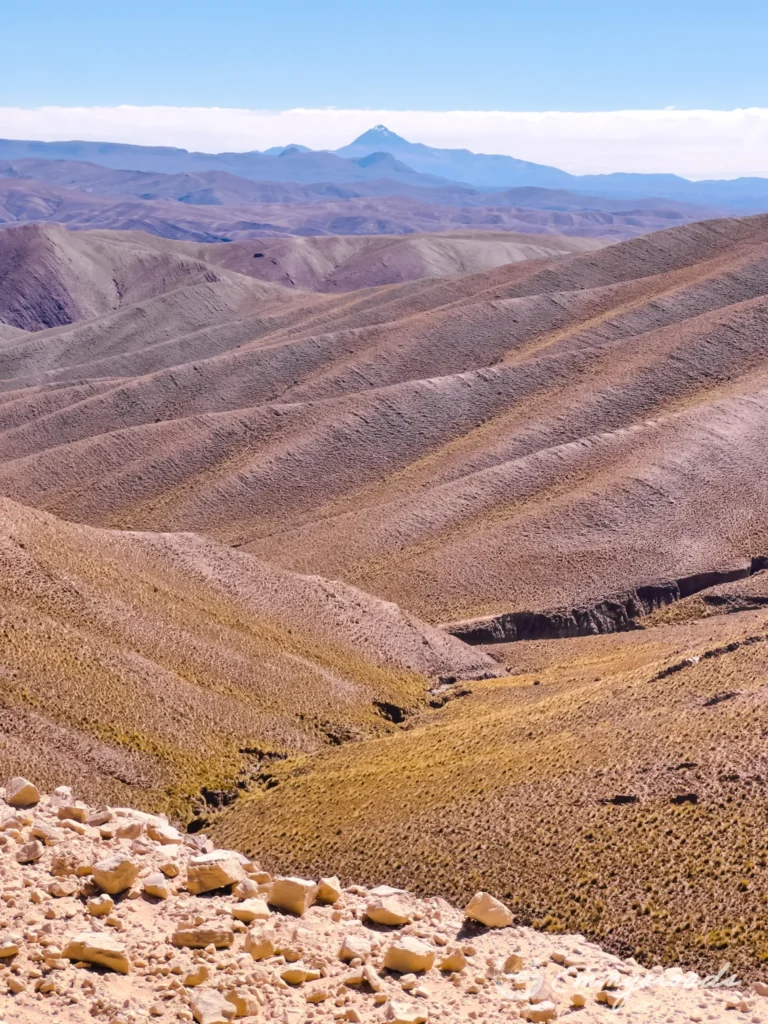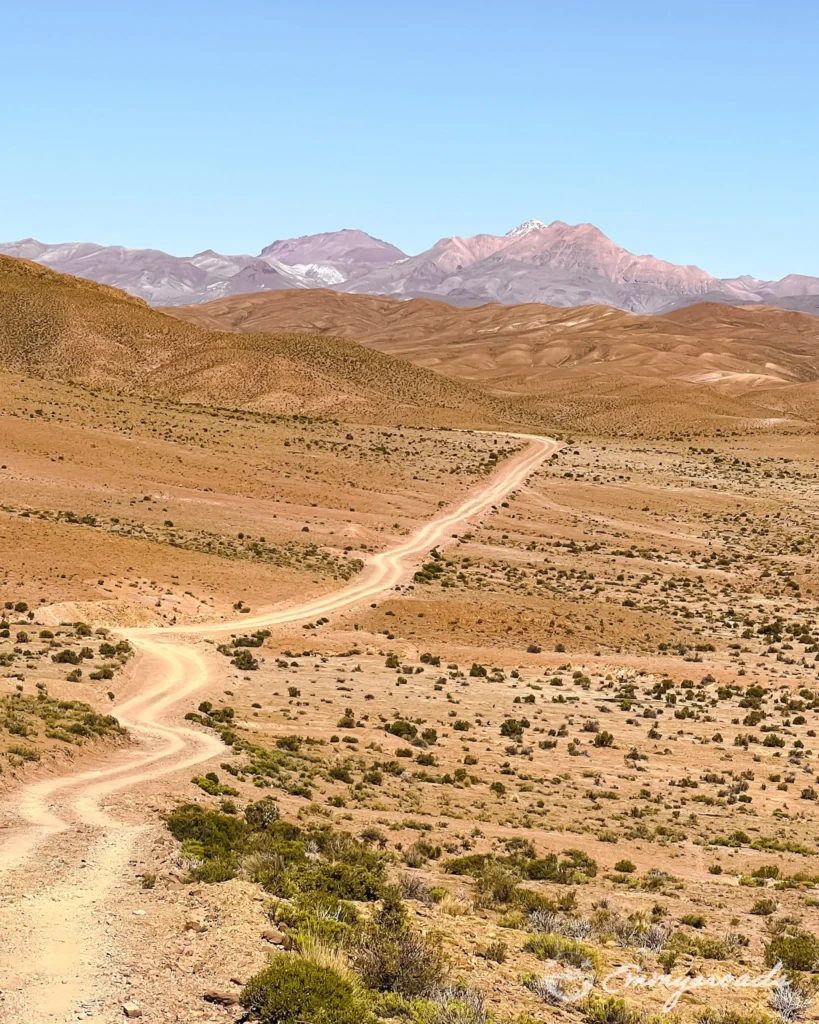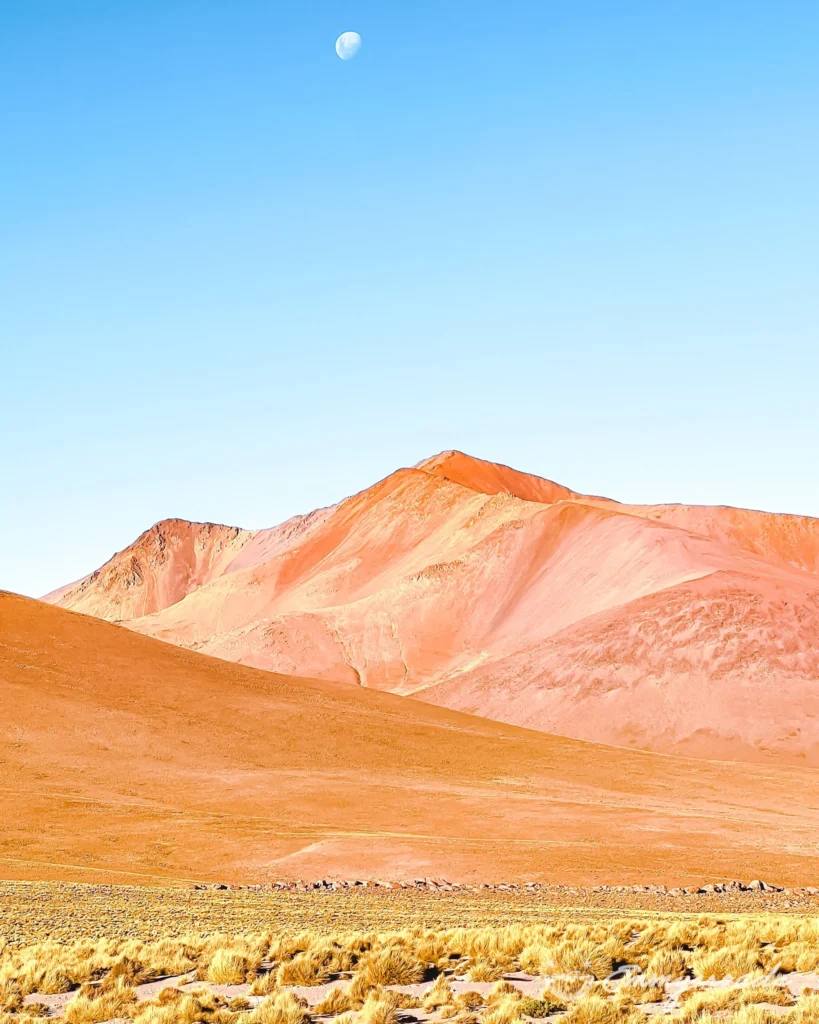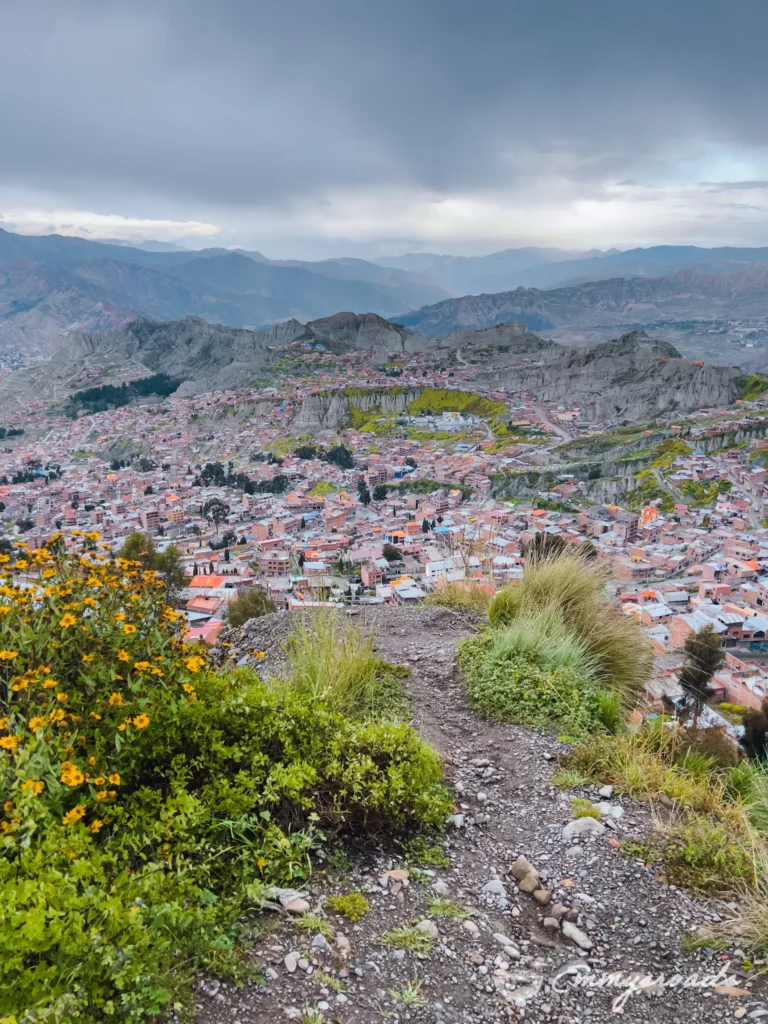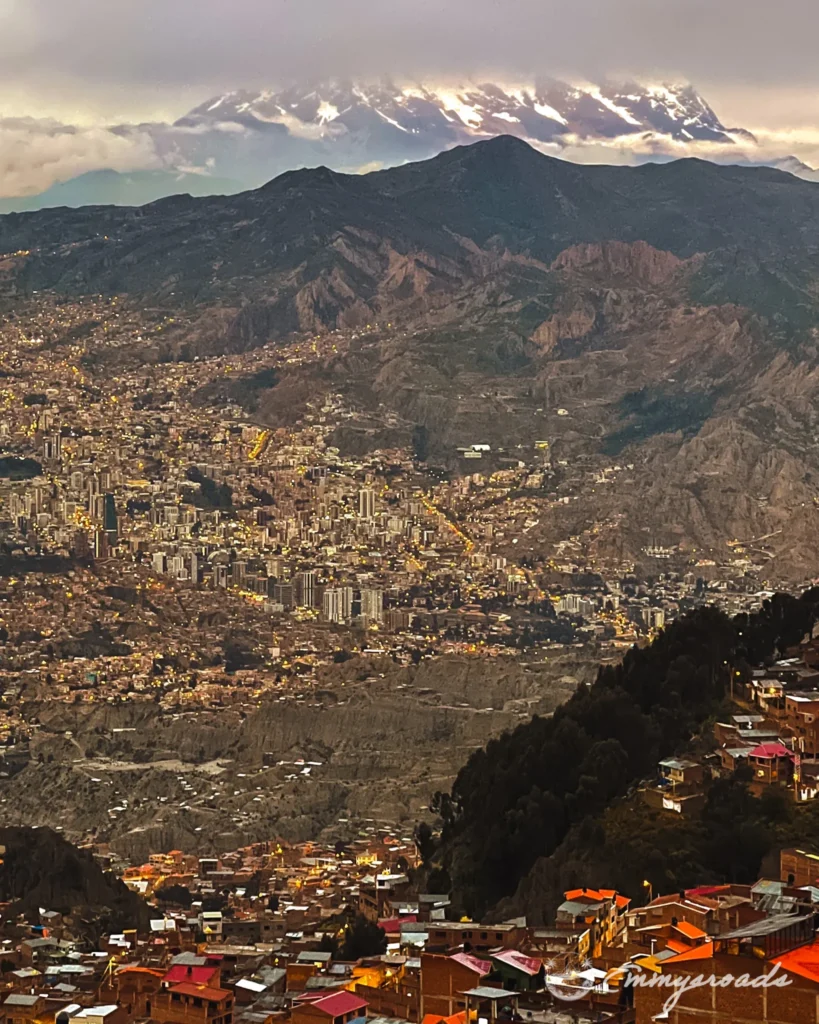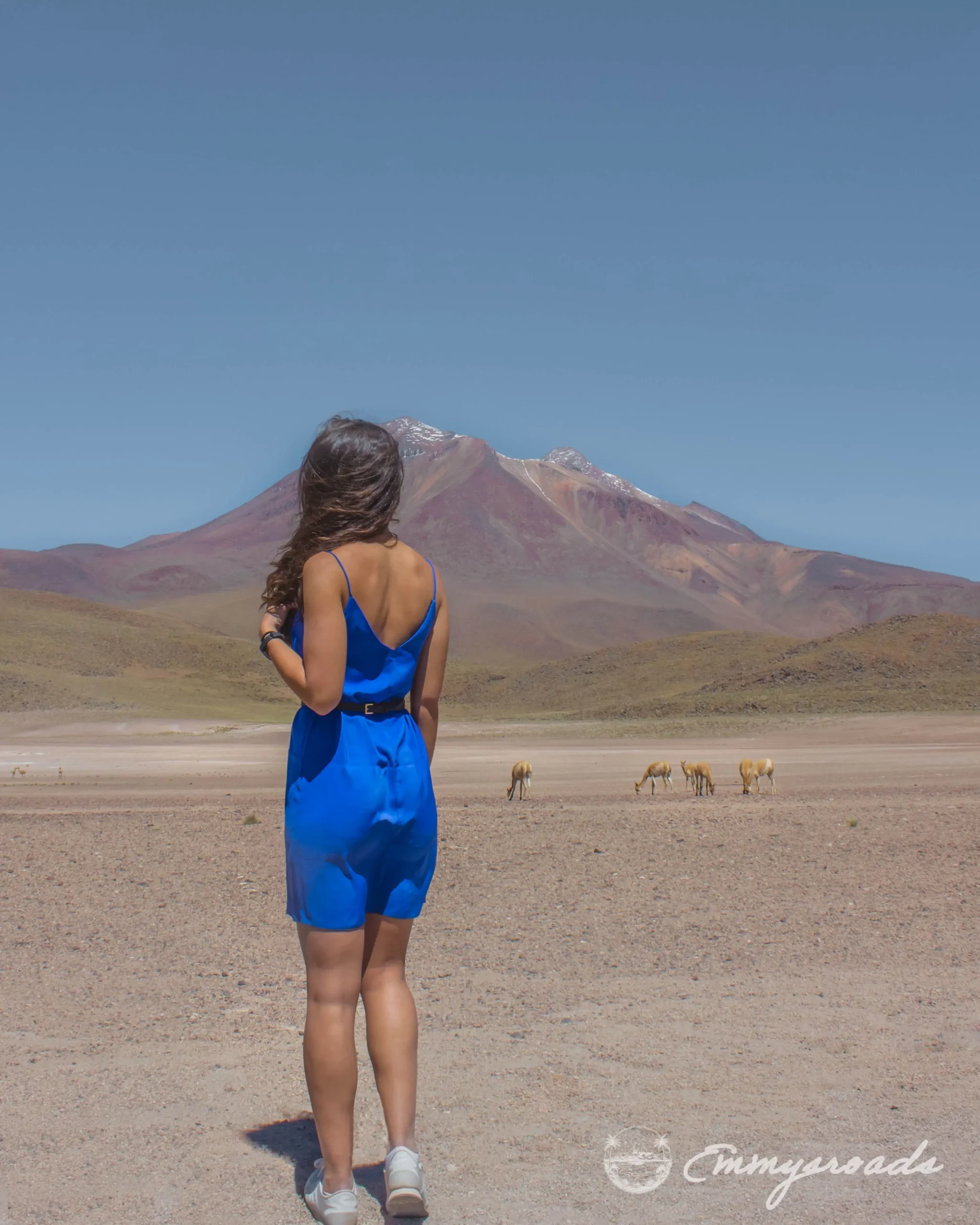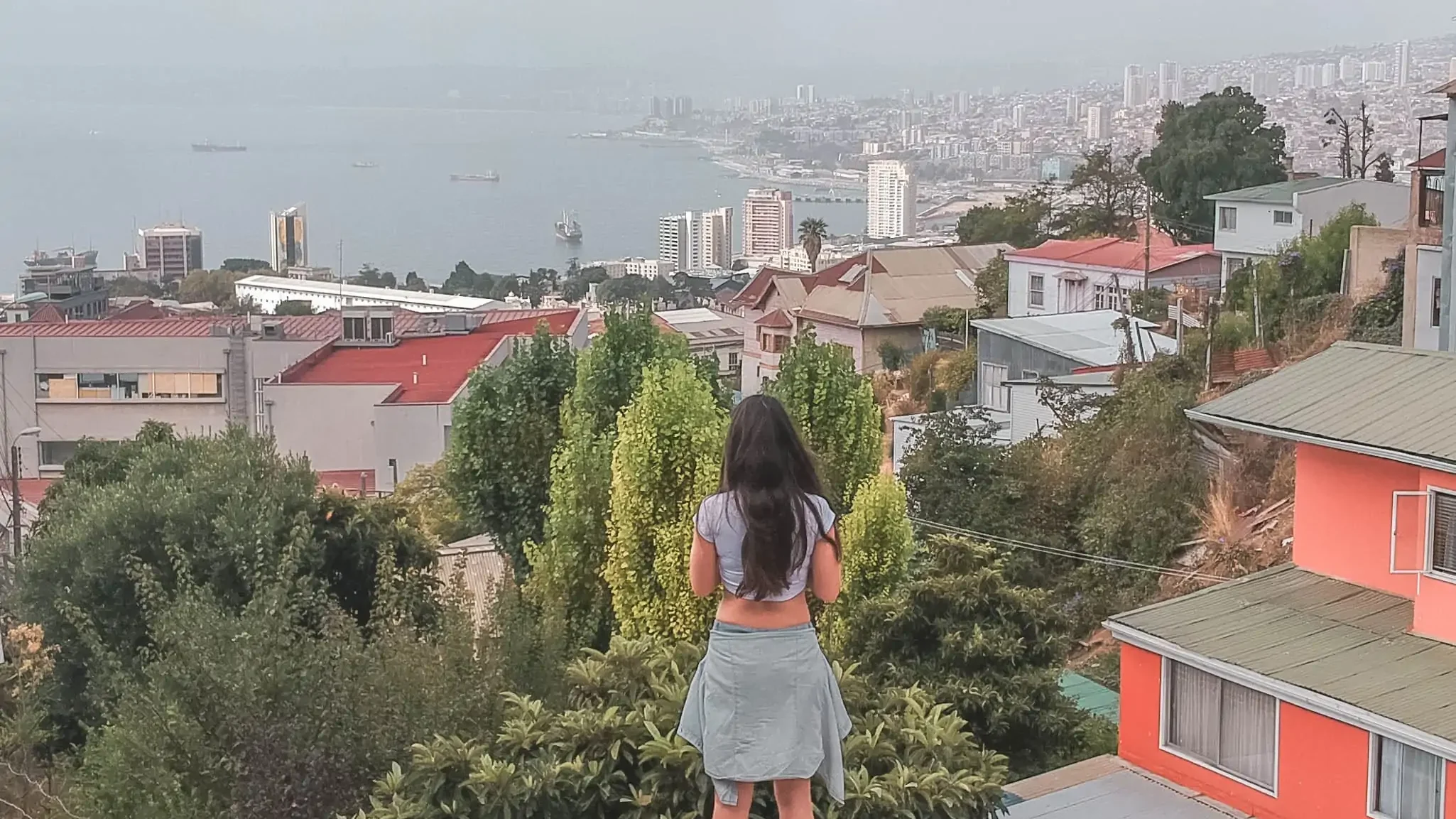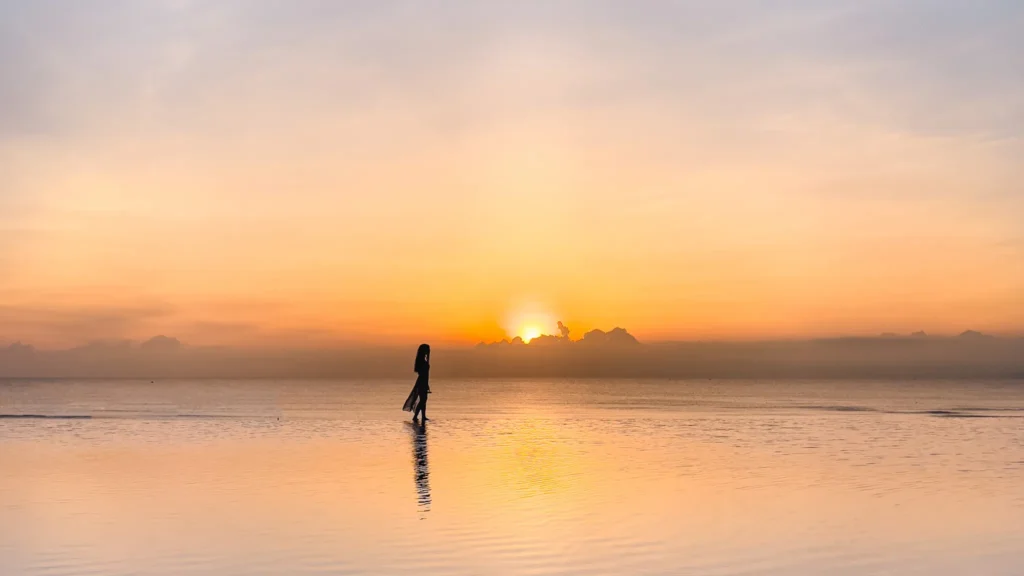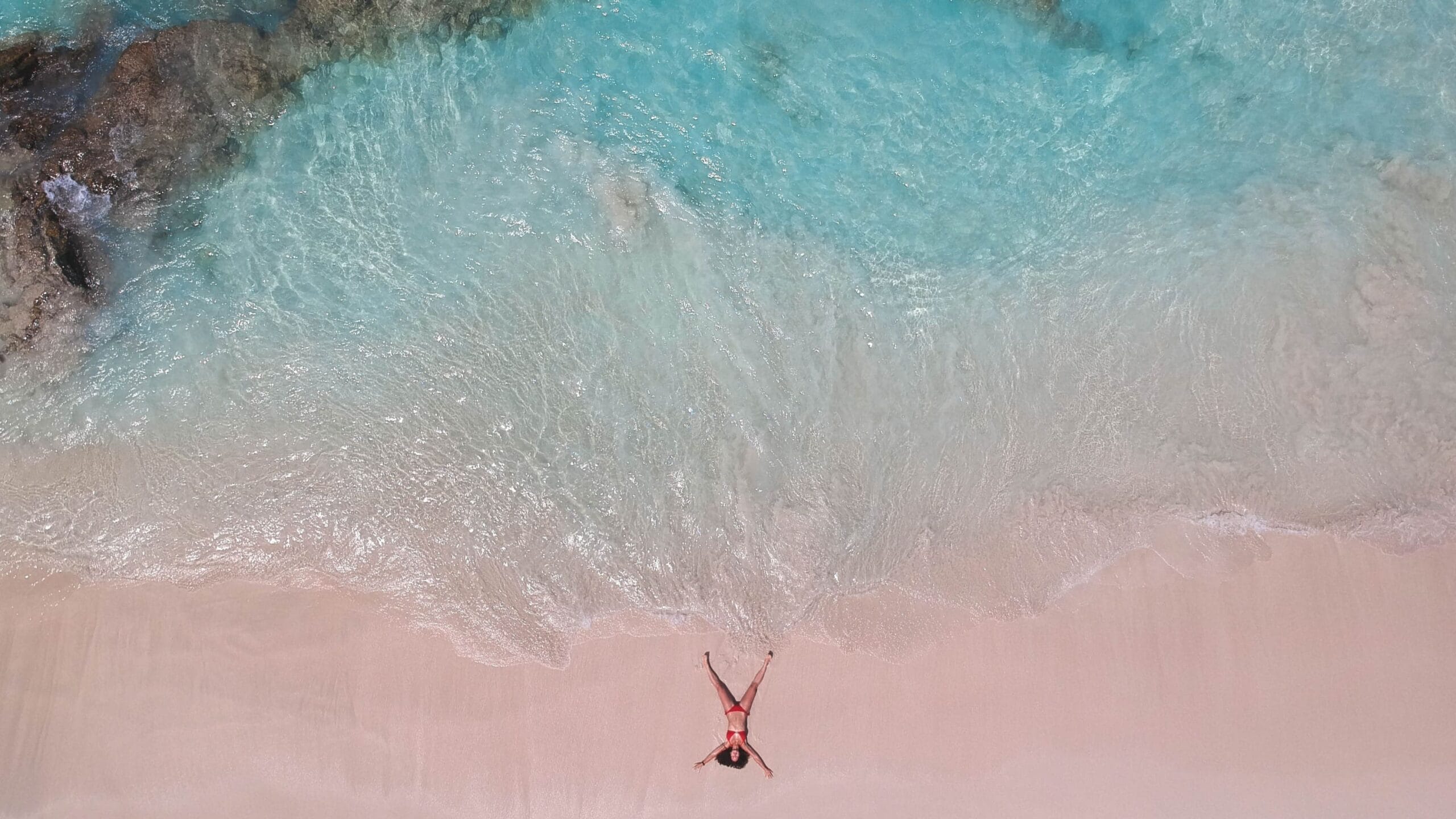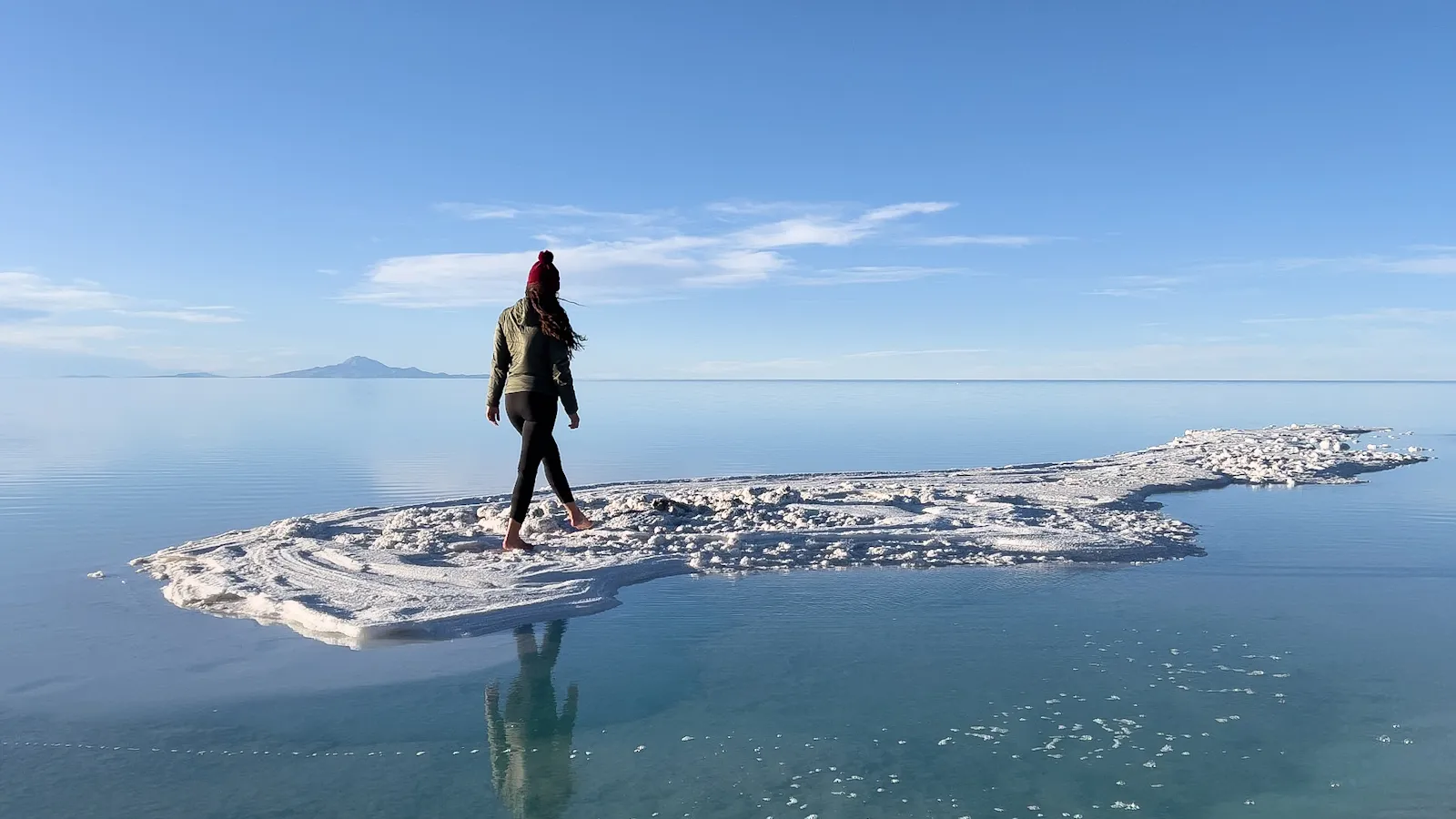
So, you’ve heard about the salt flats, the vibrant markets, and the llamas. But Bolivia? Trust me, it’s not just a spot on a map, it’s a full-on adventure waiting to happen. If you’re looking for a land full of colorful cultures, high-altitude thrills, and jaw-dropping landscapes, you’re in for a treat. Whether it’s the otherworldly Salar de Uyuni or the serene waters of Lake Titicaca, Bolivia’s got all the goodies. It’s like Mother Nature and the local cultures teamed up to make sure you have an unforgettable time.
MENU
In this post:
Why Visit Bolivia?
Bolivia is the kind of place that gives you a little bit of everything. One moment you’re gasping for air in La Paz, literally, thanks to the altitude. And the next, you’re standing in the middle of the world’s largest salt flat, wondering if you’ve accidentally stepped onto another planet.
Bolivia’s landscapes are out of this world. You’ve got the iconic Salar de Uyuni, a shimmering white desert that turns into a massive mirror when it rains. Then there’s the Amazon Basin, home to pink river dolphins, sloths, and enough mosquitos to make you question your life choices (bring repellent, seriously). If you prefer mountains, the Andes are right there, towering over the country like nature’s skyscrapers. And let’s not forget Lake Titicaca, the highest navigable lake in the world, where you can visit floating islands and pretend you’re in a National Geographic documentary.
Beyond the landscapes, Bolivia’s culture is just as rich. The country is home to a vibrant mix of Indigenous traditions, with over 30 official languages spoken, though Spanish is the main one, along with Quechua and Aymara. You’ll see women in traditional polleras (colorful layered skirts) walking the streets of La Paz, and if you’re lucky, you might even catch a cholita wrestling match. Yes, that’s a thing. History buffs will love the colonial cities like Sucre and Potosí, which were once dripping in silver riches and still hold stories from Bolivia’s past.
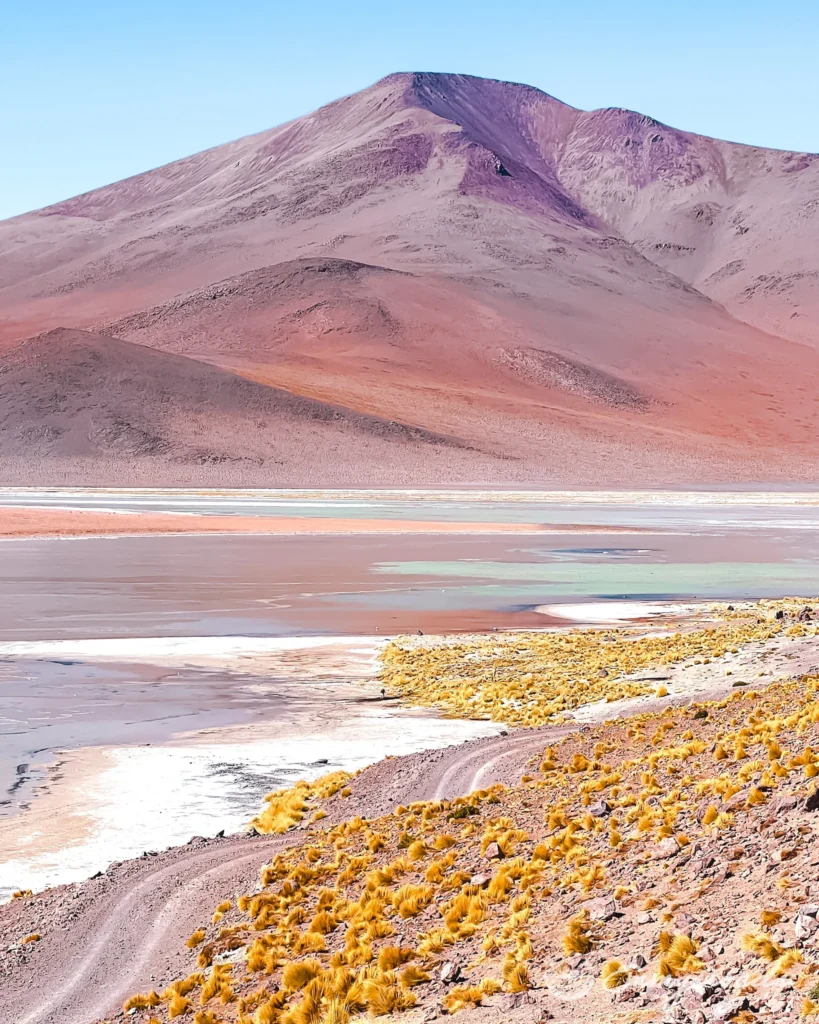
And the people? They’re warm, welcoming, and always up for a chat, especially if you show interest in their culture. Don’t be surprised if a local invites you to try some api con pastel (a sweet, warm purple corn drink with a fried pastry) or gives you insider tips on the best way to see the Uyuni salt flats. Whether you’re looking for adventure, culture, or just a place that feels completely different from anywhere you’ve been before, Bolivia is the answer.
You’ll need at least 7 to 10 days to explore Bolivia. Trust me, you’ll want time to soak in the salt flats, wander through the cities, and take in the natural wonders. You can easily bounce from one place to another, with bus rides, flights, and even trains available for your convenience. And speaking of convenience, the local currency is the Bolivian Boliviano (BOB). Credit cards? Well, they’re accepted in major cities and touristy spots, but don’t forget to bring cash when heading into the more remote areas. ATMs are available, but you don’t want to be caught in the middle of nowhere without any local cash. So, maybe stock up on Bolivianos just in case!
My Itinerary: The Greatest Hits
I started my journey in La Paz, the world’s highest capital city (because altitude sickness is a real thing). I spent a few days here, getting my bearings and trying to keep my breath steady while exploring the city’s steep streets and crazy markets. From there, I hopped on a night bus to Uyuni, because who doesn’t love an overnight bus ride where you can’t sleep but pretend to? I then joined a mind-blowing tour to the Salar de Uyuni fro Tupiza and the stunning desert landscapes around it. It’s the kind of place that looks fake, like someone took a Photoshop brush and went wild. After that, I returned to La Paz by bus (did I mention Bolivia loves its buses?), before heading north to Lake Titicaca. From there, I crossed the border to Peru, continuing my adventure. Talk about an action-packed itinerary, right?
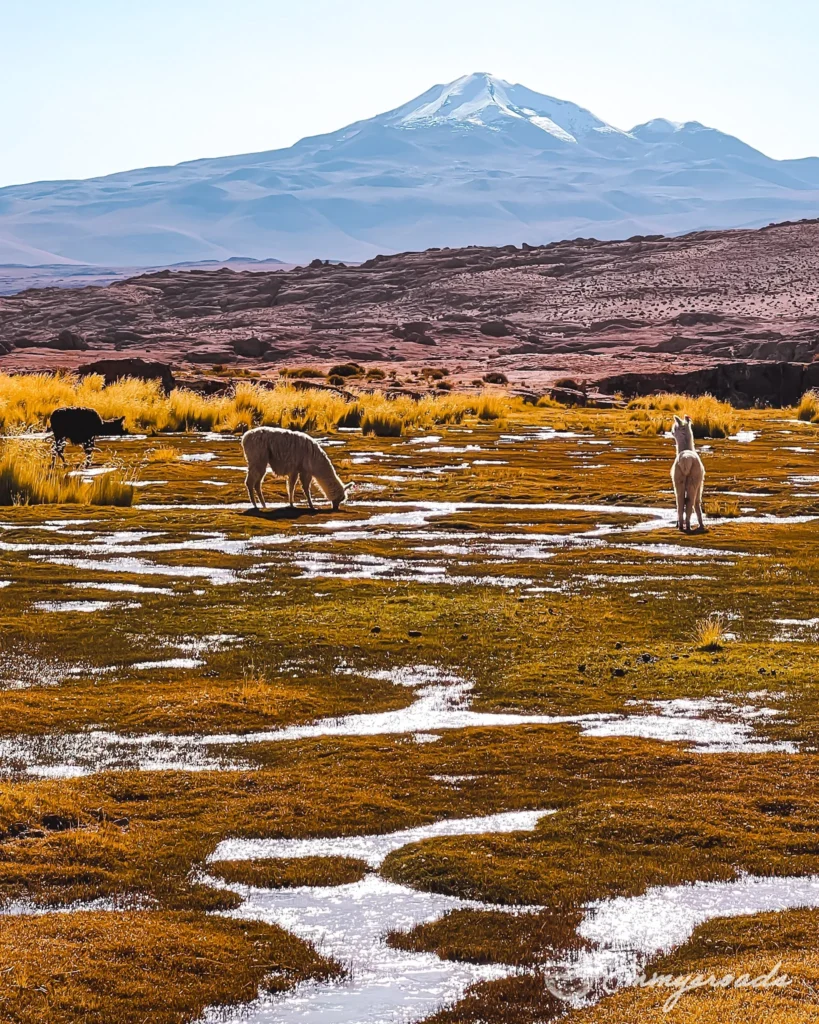
Must-Do in Bolivia: The Uyuni Tour – A Surreal Adventure
Doing a Uyuni Salt Flats tour isn’t just a highlight of Bolivia, it’s one of the most jaw-dropping experiences in South America. Picture this: miles of blinding white salt stretching to the horizon, mirror-like reflections after the rain, and a night sky so clear you’ll feel like you’re floating in the Milky Way. But the adventure doesn’t stop there! On a multi-day tour, you’ll cruise past vibrant red and green lagoons filled with flamingos, steaming geysers at sunrise, and bizarre rock formations that look straight out of a Salvador Dalí painting. And let’s not forget the random train graveyard at the start, because every good trip should include some abandoned locomotives in the middle of nowhere. All the landscapes below are part of this tour. Book your Multi-days Uyuni adventures here and buckle up, it’s going to be an unforgettable ride!
Just don’t forget, travel insurance is essential for any adventure! Whether you’re hiking through remote landscapes or venturing into unknown territories, it’s there to cover unexpected mishaps, lost gear, or travel interruptions. Explore with peace of mind and focus on the journey ahead! Check options here
Uyuni Salt Flats
The world’s biggest mirror (during the rainy season), where the sky and earth blur into infinity. Check availability of Multi-days Uyuni adventures here
Laguna Colorada
A blood-red lake that looks like Mars but with more flamingos.
Laguna Verde & Blanca
Twin lakes shimmering in shades of emerald and pearl at the foot of a volcano.
Isla del Pescado
A cactus-covered island rising in the middle of the endless white, like a mirage.
Laguna Morijón
A lesser-known but stunning lagoon surrounded by dramatic rock formations, often reflecting the deep blue sky like a painting come to life.
Laguna Negra
A dark, mysterious lagoon nestled among mossy rocks and towering cliffs, making it feel like something out of a fantasy novel.
Italia Perdida
A surreal rock valley that looks like the ruins of an ancient civilization, but surprise, it’s all natural! Perfect for feeling like an explorer discovering a lost world.
Laguna Vinto
A breathtaking multicolored lagoon with ever-changing hues, depending on the light and season, Bolivia’s nature showing off yet again.
El Sillar
A dramatic, wind-sculpted landscape of ridges and cliffs that looks like nature’s own version of a sandcastle competition.
Termas de Polques
Natural hot springs where you can soak in warm, mineral-rich waters while surrounded by surreal landscapes, because who doesn’t want a spa day in the middle of the Bolivian wilderness?
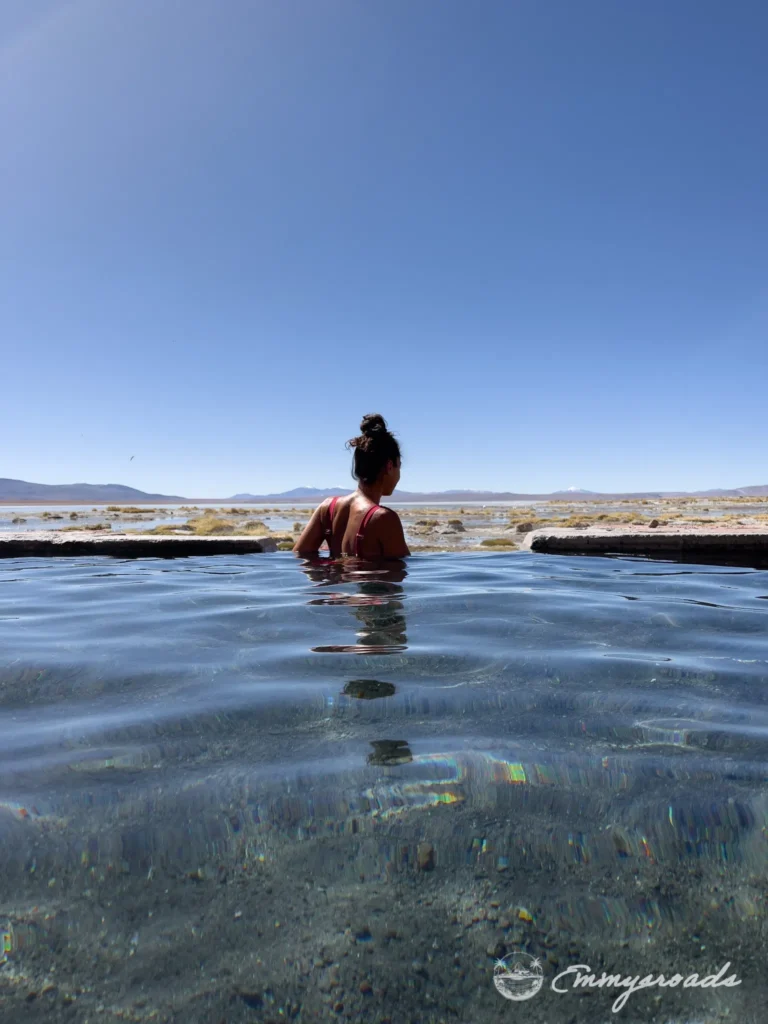
Géiser Sol de Mañana
A high-altitude geothermal field where boiling mud pools and steam vents create an eerie, almost alien-like atmosphere, just don’t get too close!
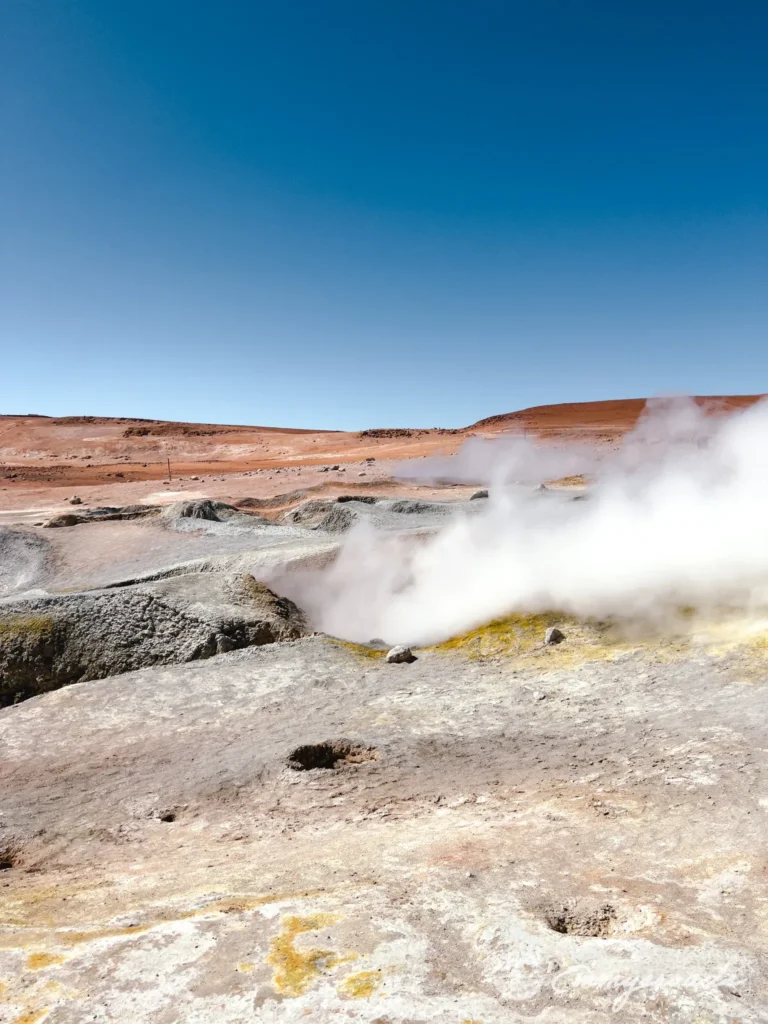
Cementerio de Trenes
Rusted locomotives telling ghost stories in the middle of the desert.
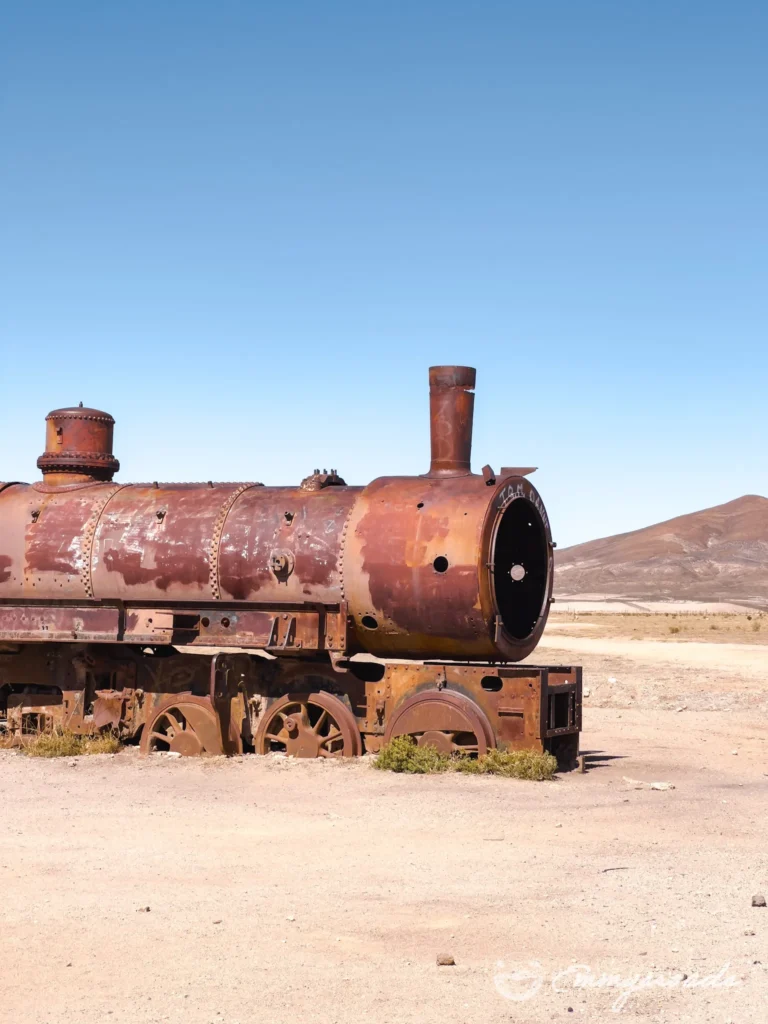
Laguna Hedionda
Flamingo paradise with sulfur-scented waters and unreal reflections.
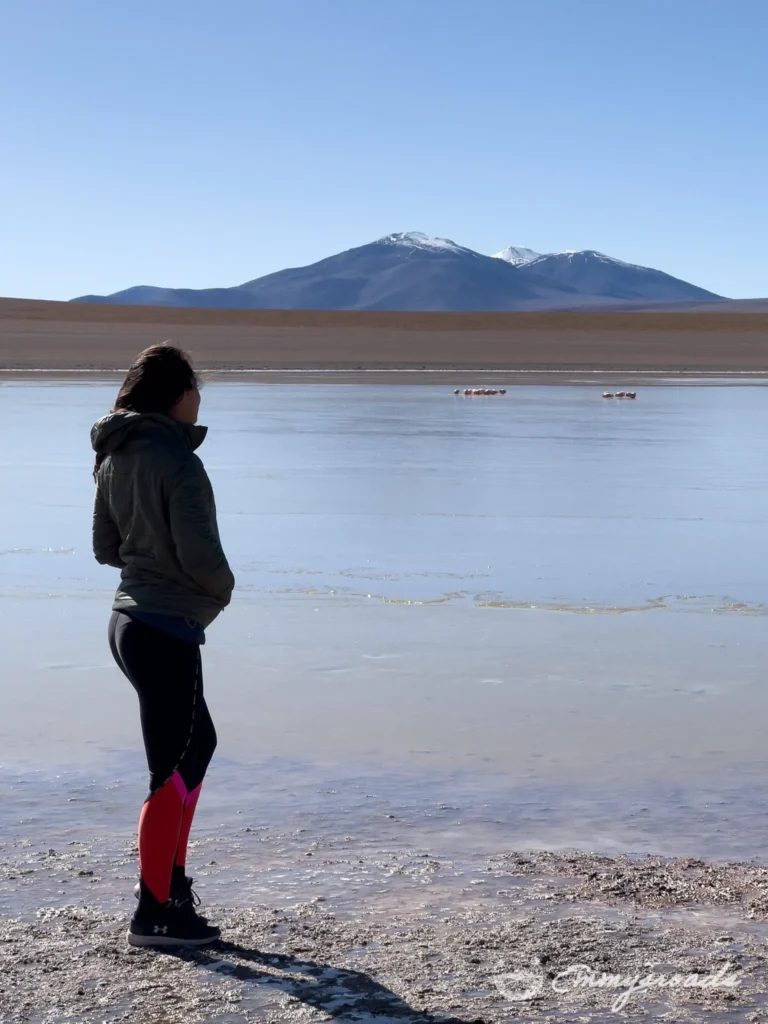
Salvador Dalí Desert
A surrealist painting made real, where the landscape looks straight out of a dream.
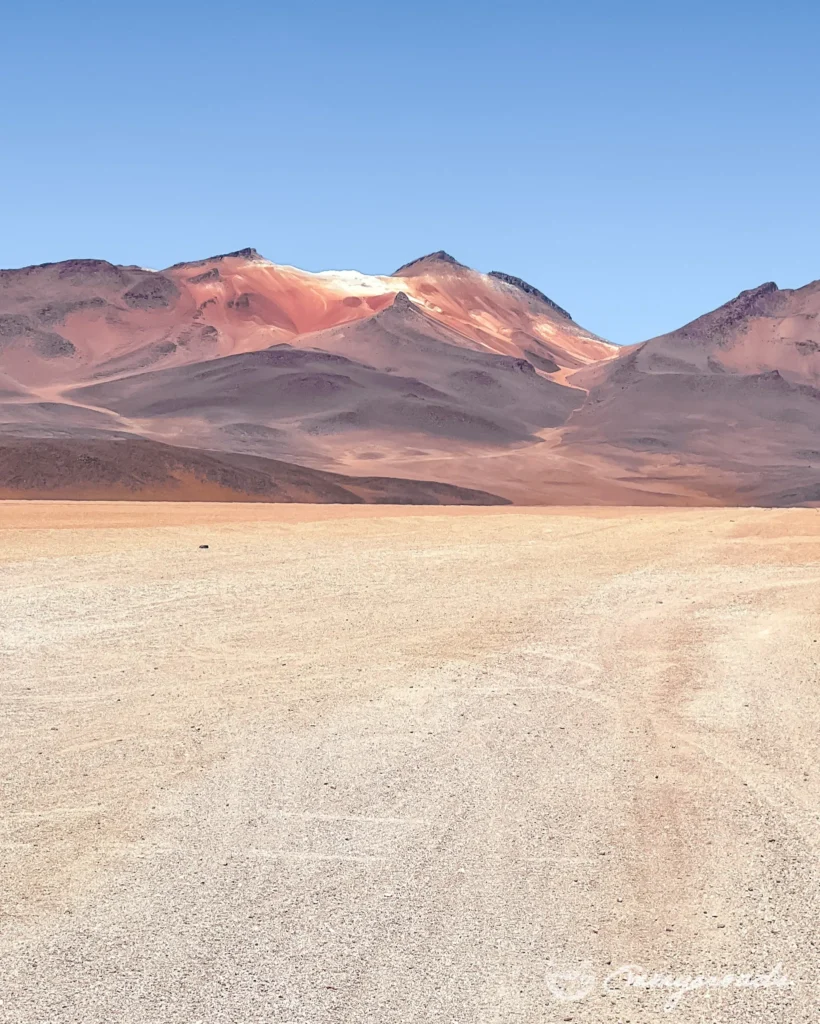
Ciudad del Encanto
Literally translating to “City of Enchantment,” this bizarre rock wonderland will have you questioning if you’ve stepped onto another planet.
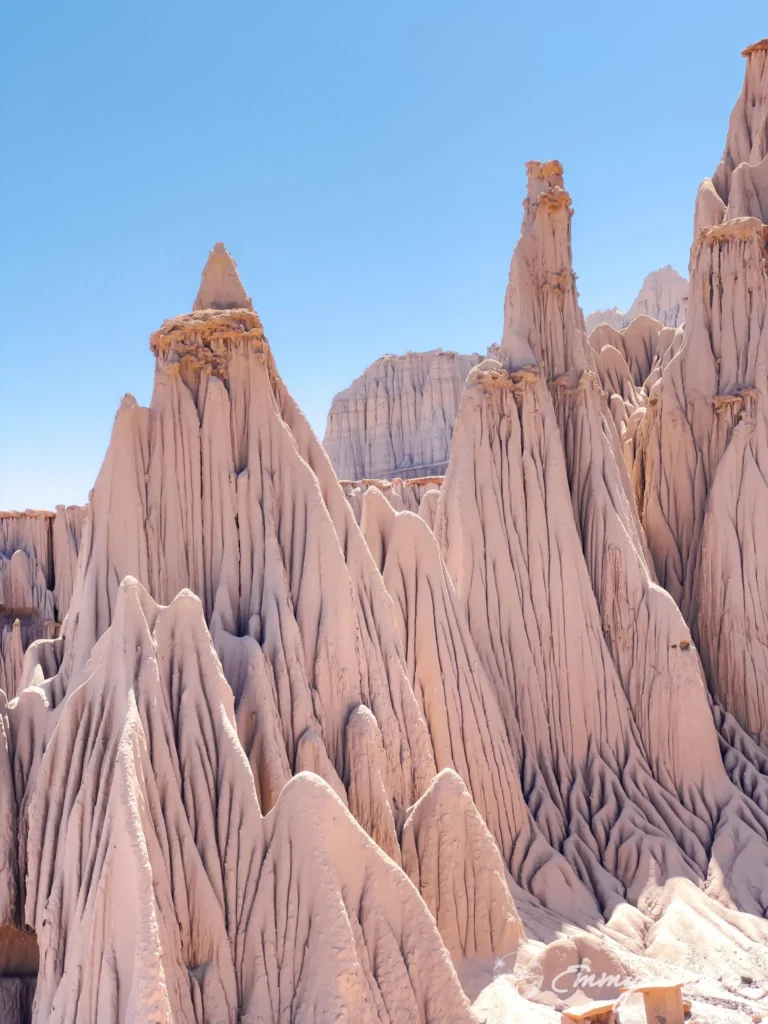
Some others highlights of this Tour:
Just a quick note: I started my tour from Tupiza, which is a pricier option but totally worth it. Since you’re going in reverse compared to the usual Uyuni departures, you get to experience these stunning landscapes almost entirely to yourself, no crowds, no photo bombers, just pure Andean magic. Book your Tupiza to Uyuni tour.
One more highlight: Mirador Virgen Blanca in La Paz
A hidden gem where the city unfolds beneath you, framed by the Andean peaks.
Top Activities You Shouldn’t Miss in Bolivia
From Uyuni: Stargazing trip to the Salar de Uyuni
Enjoy a private excursion to the Salar de Uyuni and admire the nighttime scenery. Experience this local attraction in a unique way as you gaze at the stars, planets and other astronomical bodies. Book here.

From La Paz : Explore the Moon Valley and Ride the Cable Car
Experience the unique clay formations of Moon Valley and get a bird’s-eye view of La Paz by riding the city’s cable car system. Book here.
From La Paz : Mountain Bike Down the World’s Most Dangerous Road
For adventure seekers, embark on a thrilling bike ride down the infamous Death Road. This guided tour ensures safety while providing an adrenaline-pumping experience. Book here.

From La Paz : Full Day Trip to Copacabana and Isla del Sol
Explore the beauty of Lake Titicaca with a full-day trip to Copacabana and the Sun Island. Experience the rich history and stunning landscapes of this iconic region. Book here.

From La Paz: 3 or 4-Day Trip to San Pedro de Atacama with Uyuni Salt Flats
Embark on a 3 or 4-day guided trip from La Paz and explore the Uyuni Salt Flats, the Geysers Sol de Mañana, and Red Lagoon, and finish in San Pedro de Atacama in Chile. Enjoy accommodation and meals included. Book here.

From La Paz : Half-Day Walking Tour of La Paz
Discover La Paz like a local on a 2.5 to 3-hour walking tour with an English-speaking guide. Explore the city’s highlights and hidden gems. Book here.
👉 Planning to extend your trip? Then you have to dive into my Chile guide, packed with wild deserts, epic hikes, and glacier-filled landscapes. It’s the natural next stop for adventure lovers who aren’t ready to slow down just yet.
Best Time to Visit Bolivia
When should you pack your bags for Bolivia? Well, the best time is between May and October, during the dry season. This is when the weather is more predictable, and the sun shines down on all the epic landscapes, including the salt flats. If you visit during the wet season, November to March, you’ll get to see the Salar de Uyuni covered in a thin layer of water, creating a massive mirror effect that’s straight-up magic for your Instagram. But, be warned, weather can be unpredictable at higher altitudes, so come prepared for cold temps and the occasional downpour.
How Much Does It Cost to visit Bolivia?
Bolivia is one of the most budget-friendly countries in South America, your wallet will thank you. Hostels and budget accommodations are cheap (we’re talking $5–$20 a night), and food won’t break the bank either. Street food is delicious, and you can grab a filling meal for just a couple of bucks. When it comes to transportation, buses are affordable, with tickets from La Paz to Uyuni costing around $10–$15. Tours to places like the salt flats range from $50 to $100, depending on the length and inclusions. Overall, if you’re looking for an adventure that won’t drain your savings, Bolivia is the place to be.

Getting Around Bolivia
Getting around Bolivia is part of the adventure, but don’t worry, it’s not as chaotic as it sounds. If you’re flying into La Paz, you’ll land at El Alto International Airport (find the best flight here), which is about 25 minutes from the city center. From there, you can take a taxi or use the Teleférico, a cable car system that offers stunning views of the city as it whisks you from one neighborhood to the next.
To get from La Paz to Uyuni:
- The bus is the most common (and budget-friendly) way. Night buses run frequently and take about 12 hours. They’re not luxury, but they’ll get you there for around $10–$15. Check buses options here
- If you want to avoid the long bus ride, you can fly from La Paz to Uyuni in under an hour, though it’ll cost a bit more. Find the best flight here.
Once you’re in Uyuni, the best way to explore the famous salt flats and surrounding areas is by booking a tour. There are many options, ranging from day trips to 3-day excursions. Tours typically include transportation in a 4×4 jeep, which is perfect for the rough terrain and will give you a chance to see all the natural wonders around the flats.
To get from Uyuni back to La Paz, you can either take another night bus or fly, depending on your schedule.
From La Paz to Lake Titicaca, you can take a bus to Copacabana. It takes about 3–4 hours (check buses options here). If you’re looking to save time, there are flights from La Paz to the nearest airport in Juliaca (near Puno, Peru), but that’s a bit more of a detour.
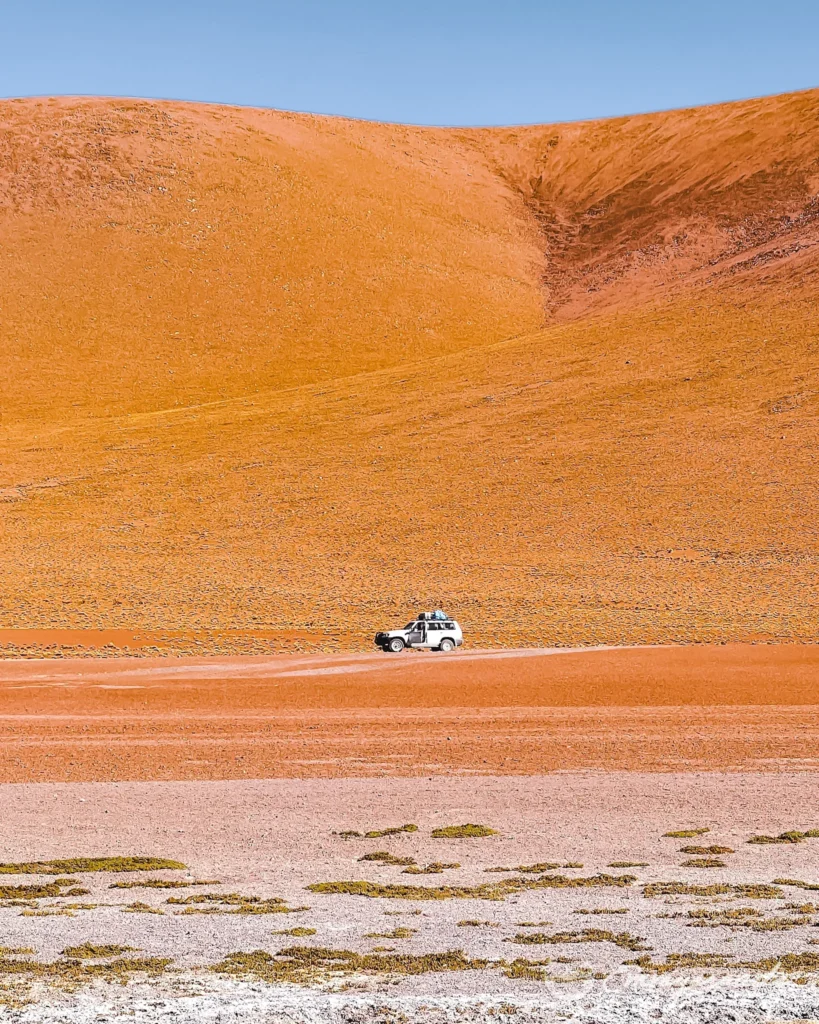
Where to Stay In Bolivia
From high-altitude cities to desert landscapes, Bolivia has accommodations for every type of traveler, whether you’re a budget backpacker, a mid-range explorer, or someone who enjoys a little luxury (yes, you can find boutique stays even in Bolivia!).
La Paz offers everything from affordable hostels with epic rooftop views to cozy boutique hotels. Uyuni? You can sleep in a hotel made entirely of salt, because why not? And if you’re heading to Lake Titicaca, expect charming stays with breathtaking lake views. Whatever your budget, there’s a perfect spot waiting for you!
Travel hack alert! Many hotels offer special deals for the U.S. and some Asian countries. Get a VPN, change your location, and score the best possible rates! Get yours here.
La Paz
Uyuni
Copacabana
Why Bolivia is Great for Solo Travelers (and Why You Shouldn’t Worry About the Whole “Solo Female” Thing)
Bolivia just feels like it was made for solo travelers, at least, that’s how it felt for me. It’s relatively safe (especially in the more touristy areas), and the locals are incredibly welcoming. While I was walking around La Paz, it was so easy to strike up conversations with friendly locals who were more than happy to help, whether it was pointing me toward the nearest llama or showing me where to find the best alpaca sweaters. As a solo traveler, I never felt out of place. There were always plenty of opportunities to join tours, whether to the salt flats or for a hike from La Paz. And as a solo female traveler? Honestly, I never felt like I had to worry too much. As long as you stay mindful (like anywhere else), Bolivia offers the perfect mix of adventure and freedom to explore at your own pace.
Staying Connected: Best SIM Cards & WiFi Speeds in Bolivia
In Bolivia, staying connected is a little like a treasure hunt, you’ve got to be patient and creative. The most popular SIM card providers are Tigo and Viva, and you can easily pick up a SIM at the airport, in most towns, or any local shop. A prepaid plan will usually run you between $3 and $5 for data, which should be enough to get you through your trip.
Or skip the hassle of hunting for a local SIM, Airalo gives you instant, affordable, and hassle-free connectivity the moment you land. No physical SIMs, no surprise fees, just seamless data in multiple countries with one easy app. Stay connected smarter, check options here.
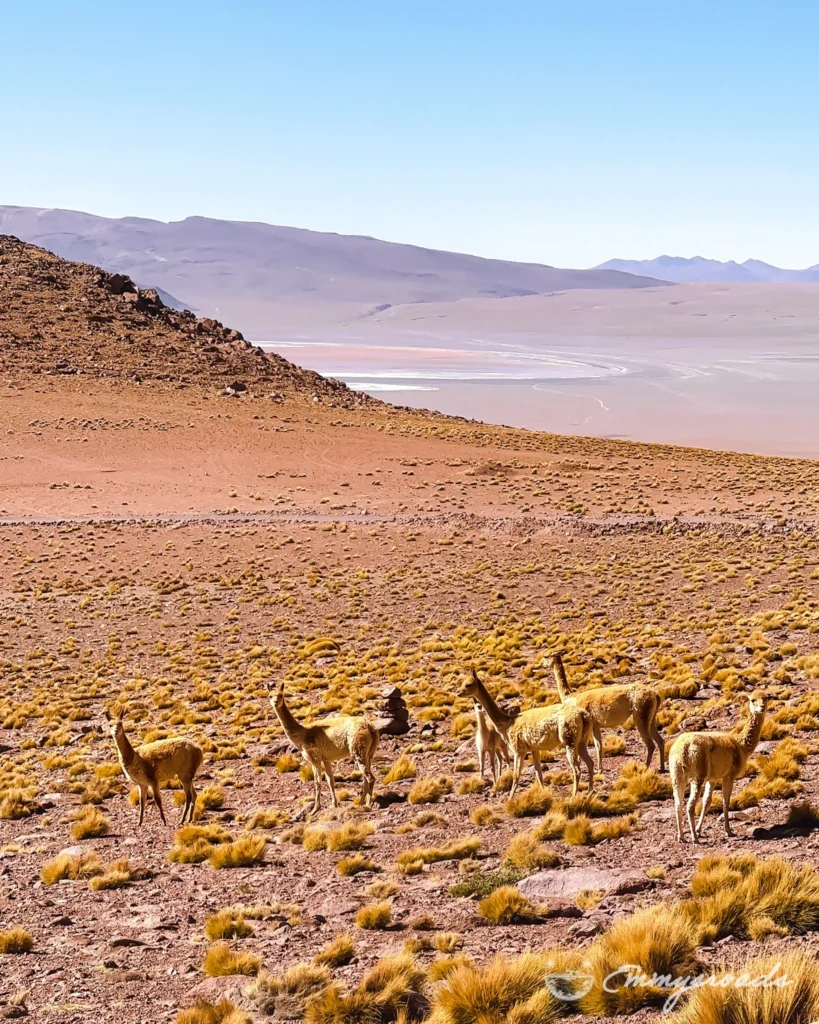
However, here’s the catch: While La Paz and major cities will have decent coverage, signal drops dramatically in remote areas, especially during your Uyuni tour. Once you venture out to the salt flats, expect zero signal for most of the trip. It’s almost like the universe is telling you to disconnect and just enjoy the jaw-dropping landscapes. It’s actually kind of refreshing, though, no distractions, just you and the vast, alien-like scenery. So, if you’re planning to do any work or need to keep in touch during a tour, be sure to download everything you need ahead of time.
WiFi speeds? Well, it’s Bolivia. In cities like La Paz, you’ll find decent WiFi at hotels, cafes, and restaurants, but don’t expect lightning speeds. It’s enough to check your email or post your vacation pics, but don’t try streaming Netflix in HD unless you’ve got a serious amount of patience.
👉 Wondering what gear I actually take with me on every trip? Check out “What’s in My Bag? My Ultimate Travel & Photography Gear”
A no-fluff breakdown of my favorite photo tools, travel essentials, and even the weird but genius things I never leave behind. If you’re a content creator, hiker, or just a curious packer, this one’s for you.
Get Ready to Embrace the Unexpected
What’s the deal with Bolivia? Well, it’s a place that will keep you on your toes. One minute you’re walking through a traditional market in La Paz, haggling over wool socks (yes, alpaca wool is a thing), and the next minute you’re standing at the edge of a salt flat, trying to figure out if you’ve accidentally stumbled into Narnia. Bolivia is full of surprises. It’s an adventure, it’s an experience, and most importantly, it’s a place where you’ll find yourself laughing at how absurdly amazing everything is. Whether it’s the quirky buses, the high-altitude excitement, or the way the landscapes make you feel like you’ve stepped into a painting, Bolivia never gets boring.
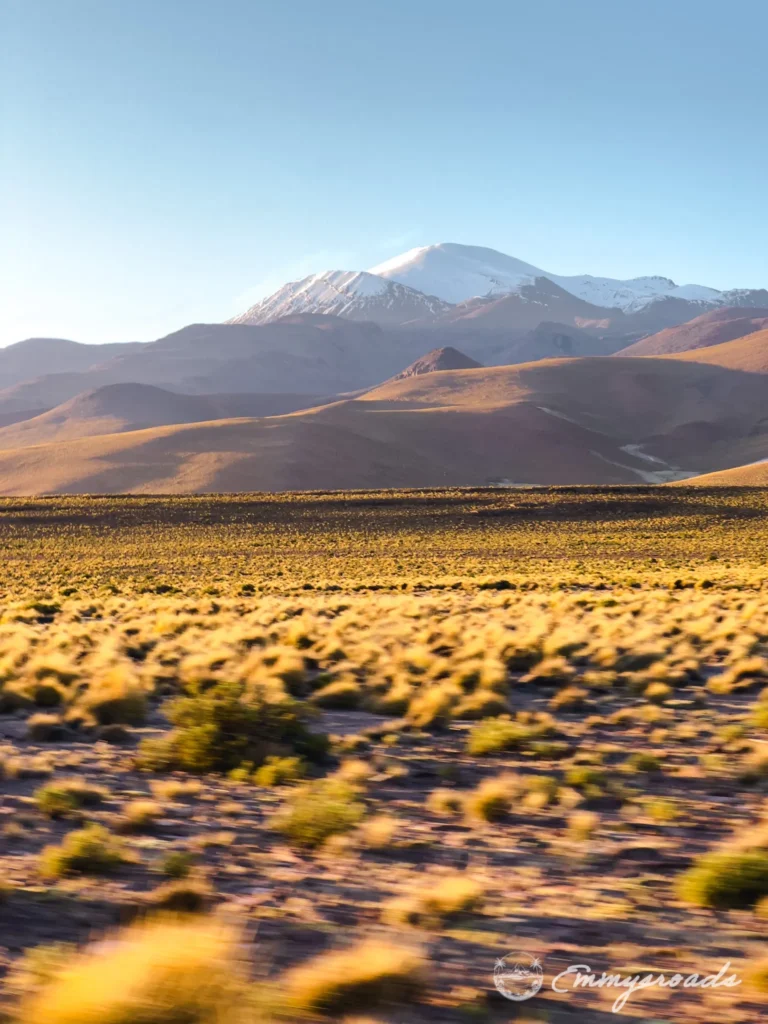
And if you think Bolivia is all about high-altitude cities and salt flats, think again, its wildlife and natural beauty are just as mind-blowing. From the lush Amazon rainforest in the north to the rugged altiplano, you’ll encounter some of the most unique species in the world. Ever wanted to see a pink river dolphin? You can spot them in the Amazon Basin. Or how about a giant Andean condor soaring over the cliffs of the altiplano? Bolivia is home to diverse ecosystems, from deserts to rainforests, and its wildlife is just as varied. Whether you’re hiking in the national parks or exploring remote areas like the Eduardo Avaroa National Park, nature here offers a constant dose of awe. Just remember to bring your camera, because Bolivia’s wildlife will make you feel like you’ve stepped into a wildlife documentary.
FAQ
Frequently Asked Questions About Bolivia
You can take a bus (which is what I did) for a long, 12-hour ride that will cost around $10–$15. The night buses are pretty standard, bring some snacks and a neck pillow, and you’re good to go (check buses options here). Or, if you’re short on time (or patience), there are flights available from La Paz to Uyuni, though they tend to be a bit pricier (find the best flight here)
Yes, yes, yes! If you’re looking for that famous mirror effect, you’ll want to visit during the wet season (November to March). Just be prepared for the possibility of some rain. The salt flats will turn into a giant reflective surface that looks like something straight out of a sci-fi movie. Trust me, your Instagram followers will thank you.
100%. It’s the highest navigable lake in the world (and yes, you’ll have a mini existential crisis just thinking about that). It’s also serene, beautiful, and perfect for getting away from the hustle of city life. You can visit the floating islands of Uros or take a boat ride to Isla del Sol. Your inner peace is guaranteed.
Final Thoughts About Bolivia
Bolivia is the kind of place you visit for the landscapes, but you stay for the stories. Whether it’s the unpredictable weather, the bumpy bus rides, or the friendly locals, there’s a charm in the chaos. If you’re looking for a destination that offers adventure, culture, and more than a few moments of awe, Bolivia should be at the top of your list.
And if you have a bit more time? Consider adding Sucre to your itinerary. Bolivia’s official capital (yes, La Paz isn’t the only one) is a colonial gem with whitewashed buildings, relaxed vibes, and the best place to brush up on your Spanish. It’s also a great spot to slow down, soak in some history, and prepare for the rest of your South American adventure.
So pack your bags, book your tours (check out Uyuni Salt Flats tour for some serious adventure), and get ready to discover one of the most exciting countries in South America!


